#12 year parody comic writer
Text
MindWarp Pilot on the clip board!
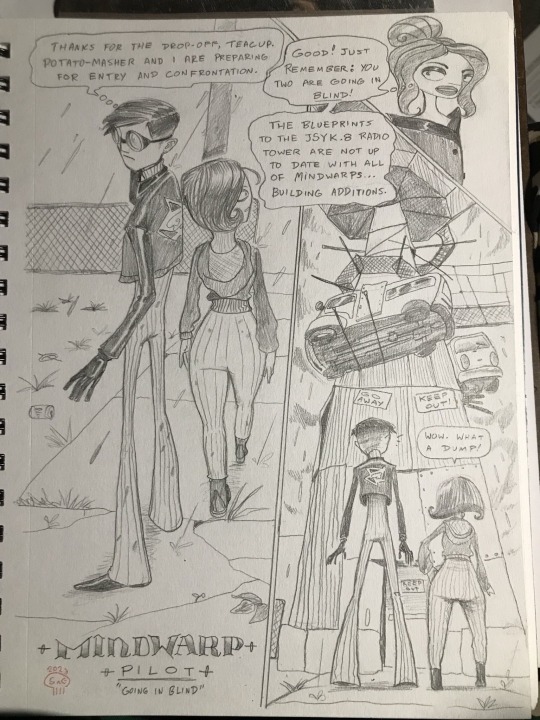
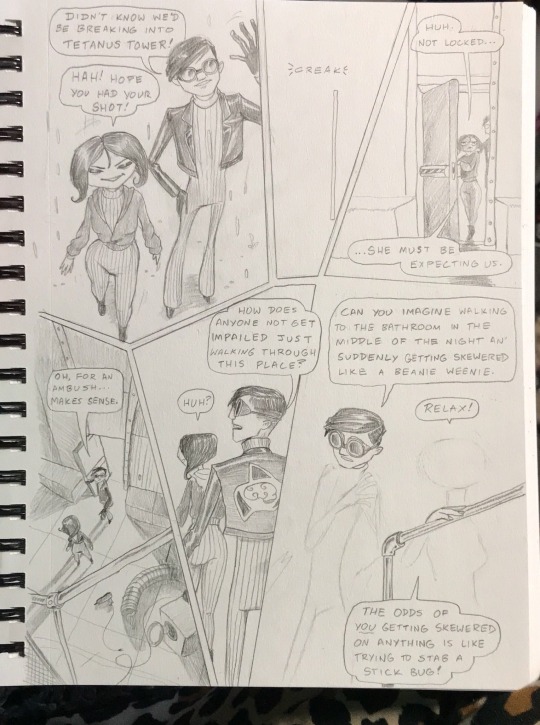
UPDATE: you’ll find the final work here
#12 year parody comic writer#I haven’t done an AU comic yet but that changes TODAY#pencil comic#psychonauts#razputin aquato#lili zanotto#eggbeater#potato masher#Psychonauts AU#Psychonauts 2000#Psychonauts Mindwarp#mindwarp#when left to my own devices I can crank out three comic pages in one sitting
148 notes
·
View notes
Text
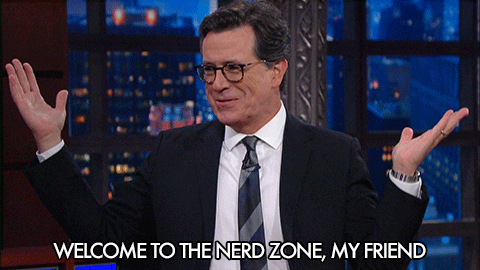
Sometimes you are going through an article and something so silly in it pops up that you question the validity of everything else in that article.
Such was my experience today. Oh yeah, this is a nerd fight but no hate to anyone involved, mistakes happen.
So What did I read? Someone actually said Zatanna Zatara is a rip-off of the Scarlet Witch.
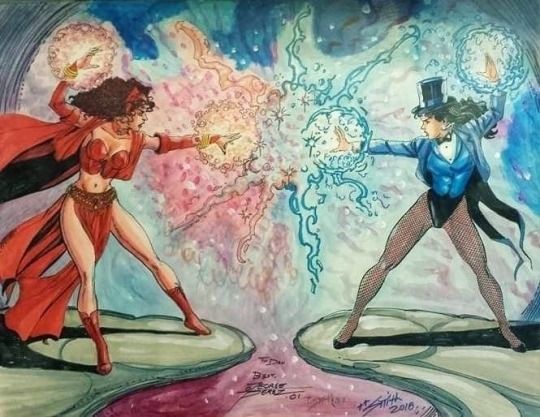
Okay so let's start unpacking this, let's take a look at the article itself.
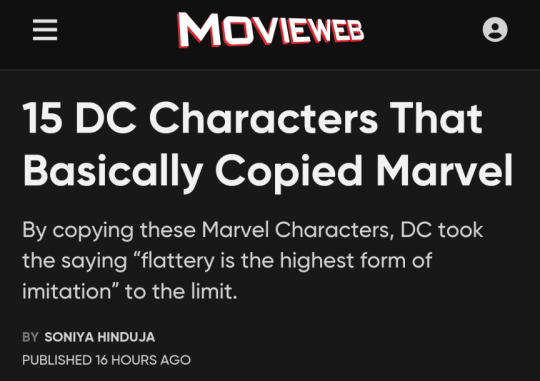
Okay, so this is a very aggressive start, DC and Marvel have a history of taking ideas from one another, including a whole team in Marvel that are basically a parody of the Justice League.
So I come in this article to number 12.

Special Note: I tried to find this article not on my phone, but it isn't easily found on the website's desktop page. So what does this say about Zatanna?

This is an interesting way of saying she makes things happen by saying them backwards, which seems a little misleading. At this point, one might give the benefit of the doubt and say the writer just isn't that familiar with the character.
The way this article is structured it's likely attempting to take Zatanna's base description and make her sound like the Scarlet Witch. So time to do some unpacking.
Talking about Homo Magi sounds like they are comparing Zatanna being a Homo Magi to Wanda being a Mutant. These two were introduced in the 60s. According to the Superfriends Wiki the concept of Homo Magi was introduced to comics in the 80s.
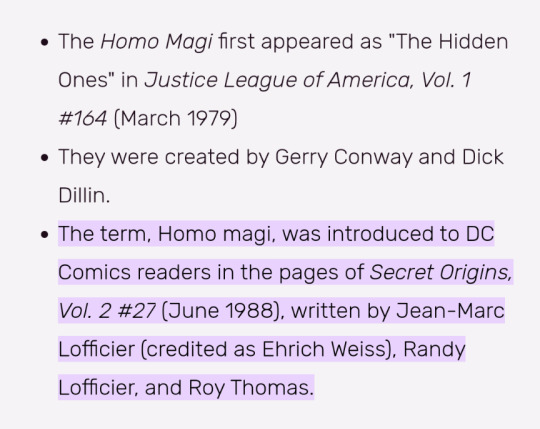
So Zatanna being a Homo Magi can't be a rip-off of Wanda being a mutant. Now maybe the implication is that because Zatanna has the same powers as her father it's the same as Wanda having her powers from being a mutant and Magneto being her father. This is very odd since inheriting traits from someone's parents seems like a pretty broad concept and not one that could be considered a rip-off.
But I will admit I am unable to confirm Wanda is the originator of the trope of a child inheriting superpowers from a parent in comics.
Next, we have the implied claim that being able to use mystical powers is what Zatanna is taking from Wanda, but this is an odd claim since when Wanda first showed up in comics her powers weren't magic-based, they were probability manipulation. Mutant powers, not magic.
Here is what Wikipedia has to say about when Wanda's powers became magic.

So Wanda's Powers likely became magical in the 70s, remember these two debuted in the 60s.
But the Article does keep going on about these two, so what does it say?
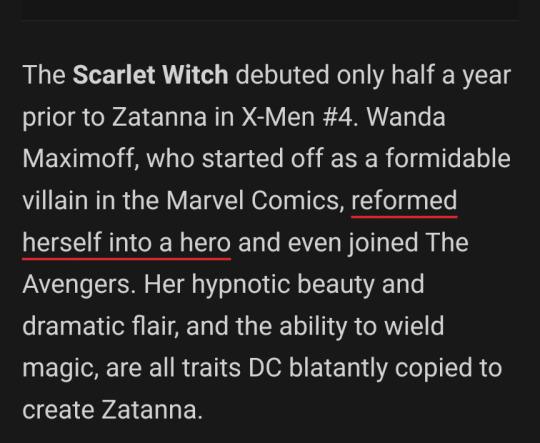
Okay, so, the claims. Hypnotic Beauty? What Comic Book woman in the 60s wasn't beautiful? Ma Hunkel existed in the 30s so I am not going to discount it, Maybe it's something about their costumes or character designs being similar? Of course, the claim is that Zatanna is a Rip-off of Wanda so we need to look at what they looked at in their orinal costumes.
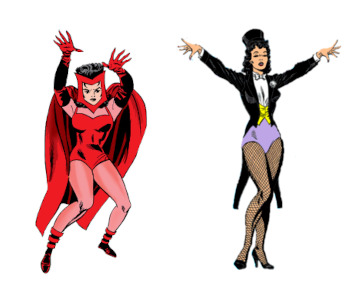
So Scarlet Witch has a head piece, and Zatanna has a tophat. Scarlet Witch has a cape, Zatanna does not. Wanda has opera gloves, Zatanna has bare hands. Scarlet Witch is wearing a full-body leopard in pink, while Zatanna has fishnets.
These two costumes have more differences but just look at these two designs. MAYBE you can point out they both have black curly hair, but most pictures I see of Wanda's first appearance have her with brown-red hair, NOT black.
So the next claim is them having a Dramatic Flair. Now I think there is a much more logical reason for Zatanna having a Dramatic flair.
Zatanna is a stage magician, a literal performer.

Her not having a Dramatic Flair would be extremely odd. But where did Zatanna's inspiration come from?
Her father Giovanni Zatara who is a Golden Age character. His first appearance was in Action Comics #1 (June 1938), which means he predates the Scarlet Witch by 26 years.
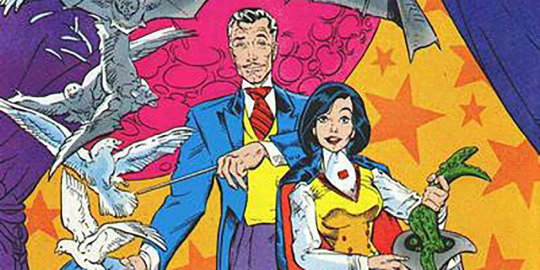
She has the same powers as him, she is a stage performer like him. Her look mimics his, but with a feminine flair a stage performer would have.
Maybe I am too much of a comics nerd, but I believe calling Zatanna a Scarlet Witch rip-off really undermines Zatanna's impact as a legacy hero who has surpassed her father in the public consciousness.
And the conversation about comic companies wanting to get their own versions of various titles is really interesting so it's sad to see it handled this poorly.
There is speculation the original Doom Patrol was created because DC Comics wanted their own Fantastic Four, and rumours are that the X-Men were created because of leaked information about what Doom Patrol would be.
From what I understand, The Fantastic Four was originally based on horror Comics and concepts, making them a body horror comic.
The Fantastic Four is one of the first comics to tackle superpowers as disabilities, with Doom Patrol picking up the concept and making it more blatant. The X-men then took this concept making it about marginalization and disability.
Anyways this massive rant is over I hope you enjoyed this nerd fight.
youtube
9 notes
·
View notes
Text
Fic I'm not gonna write: Wednesday edition
So this is the barest structure of an idea with some loose spitballing of what I'd like to see in a version of the show Wednesday that was maybe catered a bit more to my tastes. I don't know how much I like some of the ideas, but I thought I'd share some of them anyway. Sorry, this turned out very rambly and incoherent.
The core of what Wednesday didn't do for me was 2 things: it's a CW show, and, uh, the dialogue seemed dumb some of the time I guess.
I think I would have liked to see a campy comedy about Wednesday Addams attending a private school for actual weirdos, not just a bunch of cool teens doing love triangles or whatever. Not trying to hate here (apologies if I'm failing that attempt), but that stuff isn't my thing. Also no toxic family dynamics within the Addams Family! That is like the easiest fish in a barrel the writers could have ever shot and somehow they missed!
The foundation of the show or fic I'd make is that it has to be silly first. Think Homestuck: take a bunch of very wacky stuff and let it spiral out into something genuine and dramatic. Populate the school with campy movie monsters and monster-adjacent weirdos, then show what it's actually like for those people to live like that, and let drama ensue from serious lived experiences you never expected to take seriously.
If there's a grand conspiracy or mystery or big bad, it should fall in line with that idea. Absolutely ridiculous, but in a way that all of the high tension and melodrama extend out of. Something that ties into the tangled mess of spooky magic and relationships in the school, or something tied to fundamental structures that everything grows out from (like a central magic system, the origin of the school, whatever). I like the second one better, but the first is more fitting for an Addams Family series.
Some of the more shaky and specific ideas that I'm less attached to:
Base the houses or cliques on the Four Horrors theory. Separate your campy movie monsters into your Gothic Horror types (where Wednesday gets sorted), your Nuclear Horror monsters (I'm not sure where you find Kaiju small enough to fit in the school, color me stumped), your Lovecraftian kids (I'm thinking Night Vale inspired, maybe a core cast member who's like the floppy awkward fish people version of the Deep Ones as portrayed in the Innsmouth Comics), and the Slasher Students.
You could shove the Our Monsters Are Different tropes up its own ass? I don't know that this is a dead horse worth beating, but you could do that, if you humanize the characters at the end of it. I imagine that Wednesday gets introduced to the different kids as she's walked through her new school, the person showing her around says something to the tune of "I think you'll find the vampires here a little different from what you've seen in the movies." They gesture to a broody teen who's clearly an unapologetic Edward Cullen parody, in a joke that seems 12 years out of date. Then another vampire boy in a cheap Dracula costume with a cartoon Transylvania accent comes up and fist bumps him. A later episode sees these two boys try to force Wednesday into a love triangle, basically wingmanning each other. Wednesday isn't having it, but she gets entangled in their complex personal issues- not sure about the Dracula kid's deal, but we learn the Edward kid is pretty fucked up- he never mentally aged past 17 over the last several decades, he's caught in a mentality and role he's incapable of changing or breaking out of (like the Winter Court Fae in Pale), and there's a perception-altering field that everyone else treat him like a normal teenager. Wednesday somehow cottons on to the existential nightmare he's living in and helps him to actually grow up a little. Maybe in her very blunt and confrontational way, or with a strange and chaotic prank. These boys aren't in Wednesday's friend group, and don't function as anything but side characters most of the time, but when it comes time for things to go bad in the finale, kids who got spotlighted in episodes like these show up to support Wednesday with the Power of Friendship.
Actually, reading that, I think part of the issue is that Wednesday really functions best when she's in an antagonistic relationship with someone. I feel torn between thinking the series should put her against a preppy authority figure a la Addams Family Values, and forcing her into a situation where everyone's so much like her there's no authority to rally against. Probably the latter inside the school, and the former in the local town of meanies. Sort of like what the Netflix show does, but you know, less CW-ish.
IDK how to allude to this without spoiling it by implication, sorry: one of the Big Bads is played by the same cast member as the actual show. They get to be dramatic and chew the scenery and face off against Wednesday in a more intense way, and are better tailored to be a good foil for her character. I liked the idea in the show, even if the twist was a bit obvious after a while.
3 notes
·
View notes
Text
The only emotion I have about Scarlet Briar Is that she was an okay Concept
Executed with all the grace and smoothness of a Sandpaper covered Wrecking Ball being driven into an orphanage.
The amount of breaking Anet had to do to their own lore makes me feel like the character was Just a Love letter to Tara Strong.
Please note that Anet wrote a Sylvari that :
- Supposedly Outsmarted All of asurakind
- Was accepted by all the Most xenophobic factions for zero logical reason.
- United These Xenophobic Factions in specific ways With Half-baked promises and Generic “ just trust me bro please “
- All while being a Poor representation of Insanity , bordering on the comical And overdone “ Teehee Carnage “ style you see in a 12 Year old’s First Deviantart OC, Long before they learn the impact of media and representation
And she never Develops past this point. Anet tries to Add Depth but only Hamstrings her further with all the attempt to spin her into a Morally grey character instead of a cardboard cutout of a violence fetish.
Every NPC gawks at her , further Cementing the ‘ 12 year old’s first DA OC ‘ Feel in such a way that It feels like an omage to ‘ Ebony Dark'ness Dementia Raven Way ‘
To clarify, I believe that Those kinds of Characters Have a place and can be Acceptible.. well and truly away from Canon substance or Attempts to flesh out Lore.
She’s A Shallow parody of a Parody of the ‘ Manic Pixie psycho ‘ , Bordering on the Obscene and truthfully representing one of the worst Stereotypes that exists regarding schizophrenia
her purpose In The RP community, however, Cannot be diluted. She serves as a bar, reassurance for the Novice Writer that, no matter How atrociously you design a character, if you at least Apply Some braincells to the matter You can Do better than her.
I am Gleeful that her involvement with the new instance is Minimal and Neglectible , and I am ever-grateful that the new LA instance does not Constantly blast my eardrums with that Inane self-contradictory Prattling
“ Teehee what fun “ Versus the later Attempt by the journal entries to say “ oh it’s actually the dragon’s shadow tormenting me in the back of my own head :). I didn’t mean to laugh at Dying children I can’t help it :) I was trying so hard :) “
2 notes
·
View notes
Text
1. How many works do you have on AO3?
17.
2. What is your total AO3 word count?
119736
3. How many fandoms have you written for and what are they?
Final Fantasy VII
X-Men / Marvel Comics
Dragon Age
Final Fantasy IX
But mostly FFVII.
Including crossovers:
I wrote a fic called Final Trinity which spanned FFIV through FFX. It’s not on A03, but it is on fanfiction.net.
4. What are your top five fics by kudos?
What a ridiculous question, as if kudos are actually a method of measuring merit.
That said,
A Soul in Five Parts
A (Valentine’s) Day in the Life of Tifa
This Won’t Be One of Them
A Life in the Day of Reno
A Day in the Life of Rude
5. Do you respond to comments, why or why not?
I try to. Sometimes I just don’t have the energy, or I forget to, and then it nags at me for months. But for the most part, yes.
I think it’s important to have engagement with your audience, particularly if you want that audience to stick with you. If they took the time out of their day to thank you for what you wrote, or to give you some constructive feedback, then you as a writer can take a little bit time to acknowledge their comment and answer any questions they might have had.
6. What’s the fic you’ve written with the angstiest ending?
I was originally going to (incorrectly) say that I don’t “do angsty endings,” but that’d be a flat out lie. It’d have to be A Day in the Life of Elena, easily. I didn’t know what the ending to that fic was going to be until halfway through, and once I did, it hit me like a freight train and I began rewriting to accommodate it.
7. Do you ever write crossovers?
As mentioned above, I have written a total of one crossover, Final Trinity. It was the most ambitious fic I ever attempted, and it failed utterly. I tried to do an amibitious, multi-game story while at the same time trying to do my first ever fic collab with another writer. I always feel guilty for what I put Nisus through, because depression hit me hard under the strain, and despite his enthusiasm, I couldn’t push through, and then fate ultimately intervened by having my hard drive wipe and destroy all of my notes and progress that had yet to be uploaded.
8. Have you ever received hate on a fic?
Yes. A few times. One time in particular springs to mind. A “fan” -- who will remain nameless -- stalked me across all of my works, commenting on everything I did, harassed me across all of my social media, simply because of one unfinished fic that he didn’t agree with. He didn’t like the characterization I’d put forth for one of the characters, completely neglecting the story wasn’t yet told, and there was a reason why the character was written “out of character.” (Long story short, main character got possessed by something. But I’d never gotten to the part of the story where that was explained. The character being “out of character” was supposed to send a red flag to the reader, and instead he took it as a sign I was a bad writer) This nameless little shit is one of the main reasons why Final Trinity never got finished, because I just honestly couldn’t deal with it.
9. Do you write smut? If so, what kind?
Nah. Maybe one day, as an exercise, just to see if I can, but for now? Nah.
10. Have you ever had a fic stolen?
I mean, technically, if you’ve posted on ff.net, you’ve had your fic stolen, because some asshats a few years ago ripped the entire site and hosted it elsewhere. Other than that, I don’t believe so? I don’t really check other fanfics, though. Maybe someone has, and I’m just not aware.
11. Have you ever co-written a fic before?
Yes, as mentioned above. And I’ll likely never do it again out of guilt.
12. What’s your all-time favourite ship?
Rude/Tifa.
13. What was the first fandom you wrote for?
*Technically*, X-Men. Although it was when I was like 13, had no idea how to write, and the “fic” was written entirely as parody and shared with only one other person. My first serious fic was in the FF7 fandon.
14. What’s your favourite fic you’ve written?
Oof. That’s a hard one to answer. It’s probably either A Life in the Day of Reno, or A Soul in Five Parts. But Sympathy for the Devil has a place in my heart as well. It’s definitely my favourite ending I’ve ever written, but from a technical standpoint that one needs a lot of work.
15. BONUS QUESTION: Do you have a WIP that haunts you?
Final Trinity. There was so much planned for that story, and I never got to finish it. Even if I had the time, I don’t even know how to get into contact with Nisus (my co-writer) anymore, forget that he’d have every right to shoot me down if I asked.
It probably had the best Rufus-centric subplot I’ve ever thought of, but it never hit its climax, and writing Kain Highwind was a blast.
7 notes
·
View notes
Text
Cerebus #20 (1980)

Cerebus' expressions from the beginning of the blow job to the end.
This is the issue where Cerebus truly became presidential. Or whatever adjective I should be using to describe how Cerebus was just a Swords & Sorcery parody comic book with guest appearances of parodies of other fictional characters (Come on. We all know Groucho Marx is a fictional character) but then suddenly became a political and religious and philosophical parody comic book with guest appearances of parodies of political, religous, or philosophical personas. Maybe I meant it matured? Sure, it'll still have Elrod for a bit and satires of DC and Marvel heroes and, sometime after the next couple dozen issues, the McFleagle Brothers but it'll also have a bunch of stuff I don't understand too! And if I don't understand something, you better believe it's smart! That's gospel coming from somebody who just finished reading Pynchon's Gravity's Rainbow and understood exactly 12% of it (that 12% deals with boners, sex, drugs, and coprophilia (my parents would be proud that I didn't even need to Google how to spell that!)).
Why do I think this is the issue where Cerebus matured? Because it begins with a quote from Cirin's The New Matriarchy. Shit's about to get real, goose.

This is the second great joke in Dave's blank page series of jokes.
I absolutely mean it when I call the blank page jokes great. It's an important example of what I think differentiates Early Stage Writer Dave Sim with Late Stage Writer Dave Sim: his whimsy. At some point after this moment when the comic book matures, Dave Sim begins to take things way too seriously. Sure, he still gets goofy even at the end when he introduces the Three Stooges. But it's different because it's goofiness in service to the serious. It's not just goofiness for goofiness sake. It might be slapstick but it's not whimsical. Or maybe it is but it's hard to see it that way after you've just read a year or two of horribly dry and reaching Biblical explications.
Last issue, Cerebus was captured by Perce, a Cirinist. He has been drugged and about to have his cards read to see if he will be a fitting ally for the rise of the Matriarchy. It's either that or be destroyed even though the quote from Cirin's book says "We cannot dismiss any soul as extraneous. All originate with the Mother and all must be instructed in her ways." I suppose later when we learn Cirin isn't actually Cirin but Cirin's general, it makes sense that the words of Cirin don't match the action of the current Cirinists.
While in his drugged state, Cerebus reaches the Seventh Sphere and begins talking to somebody (not Gort). I believe it's Cerebus' first communication with Suenteus Po (the third aardvark after Cerebus and "Cirin" (really Serna, Cirin's general who takes over the movement)). I'm sure that will be revealed by the end of the issue. It probably isn't too important now.

This conversation takes place after Cerebus tells the voice he has been drugged. "Some of my best friends drug people" is a fantastic line.
Suenteus Po reveals himself and Cerebus recognizes the name as the founder of Illusionism. I don't remember any of Po's Illusionist philosophies. That means he probably isn't super important to the story except for a later big reveal that he's also an aardvark. It seems like Astoria and Kevillism become more important. That's probably because Astoria and Cirin are out there on the battlefield crossing swords while Po is, I don't know, hanging out with guys who drug people and partying in the seventh sphere. Hmm, you know what? That might actually be the basic tenets of Illusionism: drink, fuck, and blow your mind, dudes!
Oh, I also just remembered that this might not even be the actual Suenteus Po! I guess Dave Sim loves the "this character wasn't really the character you thought it was" reveal! Or maybe Sim just found that a convenient way to shift continuity when he realized an early voice of a character didn't exactly fit the character he wanted it to be in a later story arc.
Cerebus tries to pit the Illsuionists against the Cirinists in a battle just outside the place he's being held captive. It almost works but before Wenda and Perce both leave him alone to fight Illusionists, Wenda drugs him again and he loses consciousness.
So the Illusionists (at least this version that probably interpreted all of the real Po's writings incorrectly because who wouldn't want to believe in a philosophy where you just indulge in debauchery?) get their asses kicked by the Cirinists because the Cirinists mean business and the Illusionists mean fun. And business always trumps fun for some stupid reason. I guess maybe that reason is ambition or something.
The letters page was unremarkable. The Single Page had an Evan Dorkin "Milk & Cheese" strip. The best part was seeing the address to Slave Labor Graphics on Bascom Avenue in San Jose, some of my old stomping grounds. Pretty sure it was located next door to a shop that sold old toys and collectibles. It wasn't too far from Taco Bravo.
Cerebus #20 Rating: B+. Remember when Neil Gaiman wrote that 24 hour comic book about "Heliogabalus"? I do. See you next time, farts!
13 notes
·
View notes
Text
My Five Most Influential
Someone asked:
Who are the most influential writers in your life?
Good question.
The broad answer is that one gets influenced many different ways by many different sources. I enjoy poetry and song lyrics because they find ways of conveying the strongest emotional content in the most concise manner, music brings a sense of dramatic rhythm and fulfillment, the visual arts suggest ways of subtly adding many insights to a single strong idea, etc., etc., and of course, etc. (and that is also an example of a creative influence in my work).
But…to boil it down to those whom I most consciously made an effort to emulate, we find ourselves facing five creators that primed the pump.
This is not to say others whom I began following after them didn’t wield a lot of influence (thanx, Ernie, Bert, Jack, Bob, and Hank!) but these are the foundation of everything I’ve done in my career.
(And to those who notice a lack of diversity, I know, I know…but to be honest I have to acknowledge the truth, and the truth is for whatever reason, by chance or by choice, by fate or by fortune, these five dominated my sensibilities. I trust that I’ve grown and expanded my horizons since then, but they’re the hand I got dealt.)
. . .
Carl Barks
I loved ducks as a kid and my grandmother and aunt would always bring me a passel of duck-related comics when they came to visit.
There were some Daffy Duck comics mixed in there but while I know I looked at and enjoyed them, none of them stick in my mind like the Donald Duck and Uncle Scrooge stories of Carl Barks.
Typically my grandmother would read these comics to me and I’d imprint the dialog and captions in my brain, replaying them as I looked at the pictures over and over again.
Barks never wrote down to his audience, and his stories covered a vast array of genres, everything from straight domestic comedy to oddball adventures to screwy crime stories.
Donald and his nephews encountered dinosaurs more than once (another big favorite of mine), and Uncle Scrooge setting out to explore the asteroid belt in order to find a new home for his fabulous money bin was another tale I loved literally to pieces, but A Christmas For Shacktown remains my all time favorite graphic novel.
I’ll concede there are better graphic novels, but none of them warm my heart the way that Christmas story does.
Barks showed it’s possible to combine heart (not to be confused with sentimentality or =yuch!= schmaltz), vivid characters, and strong, intricate narrative. His plots where typically filled with unexpected twists and turns but his characters were always deeply involved in them, not just along for the ride.
He’s one of the greatest storytellers in the 20th century, and his work remains timeless enough to last for several centuries to come.
. . .
Ray Bradbury
The first Ray Bradbury story I remember encountering was “Switch On The Night” in its 1955 edition, read to my kindergarten class towards the end of the school year.
This would place the event sometime in the spring of 1959.
“Switch On The Night” captivated me because it was the first story I’d ever heard that showed what could be seen in the dark that couldn’t be seen in the day.
Even as a child, it made me realize the night wasn’t scary, but contained wonders and insights we miss in the harsh glare of day.
I don’t recall if the kindergarten teacher told us the name of the author, and if she did it didn’t stick, but boy howdy, the story sure did! Did it open the doors of the night for me, or was I already inclined to be a night person and it simply confirmed that as a valid identity?
I dunno, but I’m typing this right now at 12:24am.
And the thoughts Bradbury planted in little Buzzy boy’s brain stayed and grew and flowered, as you can read in my poem, “The Magic Hours Of The Night”.
The next time I encountered Ray Bradbury’s writing was in grammar school, certainly no later than junior high. I was already interested in science fiction by that point, and had read “The Pedestrian” in one of my school English books (we weren’t taught the story in class; the teacher skipped over it for whatever reason but I read it anyway then re-read it and read it again and again).
Anthony Boucher’s ubiquitous 2-volume A Treasury Of Great Science Fiction was in my grammar school library and in it was Bradbury’s “Pillar Of Fire” (which I would later learn was one of his alternate Martian Chronicles and a crossover with Fahrenheit 451) and in that story he offered up a veritable laundry list of outré and outlandish fiction to be tracked down and read, authors to dig up and devour.
Oh, man, I was hooked.
So of course I began looking for all the stories and writers Bradbury listed in his short story but I also began looking for Bradbury’s own work and before you could say, “Mom, can I get a subscription to the Science Fiction Book Club?” I’d read The Golden Apples Of The Sun and A Medicine For Melancholy and R is For Rocket never once dreaming that at some point in the future the roadmap Ray plopped down in my lap would eventually lead to us being co-workers (separate projects, but the same studio at the same time) and friends.
There is a beautiful yet deceptive simplicity to Ray’s work, and even though he wrote his own book on writing (The Zen Of Writing) that has lots of good insights and professional tricks & tips, he himself wasn’t able to explain how he did it.
I don’t think I’ve ever seen a good Ray Bradbury parody.
I’ve seen parodies that clearly are intended to evoke Ray Bradbury, but only in the same way a clumsy older relative might evoke Michael Jackson with a spasmodic movement one vaguely recognizes as a failed attempt at a moonwalk.
But, lordie, don’t think we didn’t try to emulate him, and while none of us fanboys ever came close, I think a lot of us did learn that less is more, that the right word carries more impact than a dozen paragraphs, and that there’s magic in even the most ordinary of things.
And of course I discovered the film and TV adaptations of his work, and in discovering them I also discovered that there are some things that just can’t be translated from one media to another, and that the light, effortless appeal of Ray’s work on the page (paper or pixel) can at best be recaptured with a good audio book reader but even the best dramatic adaptions -- even those by Ray himself -- are cold dead iron butterflies compared to the light and lively creatures flying about.
So eventually I stopped trying to write like him, and instead picked up the valuable lessons of mood and emotion making an impact on a story even if the plot didn’t make much logical sense.
Decades later I would become a fan of opera, and would learn the philosophy of all opera lovers: Opera doesn’t have to make logical sense, it just has to make emotional sense.
Ray Bradbury, opera meister.
. . .
H.P. Lovecraft
As noted above, Bradbury’s “Pillar Of Fire” tipped me to numerous other writers, first and foremost of which turned out to be Howard Phillips Lovecraft.
Okay, before we get any further into this, let’s acknowledge the woolly mammoth in the room: H.P. Lovecraft was a colossal asshat racist.
He was a lot of other terrible things, too, but racist is far and ahead of the rest of the pack.
It’s a disillusioning thing to find people one admired as a youngster or a teen later prove to have not just quirks and eccentricities and personal flaws, but genuinely destructive, harmful, and offensive characters.
I’ve posted on that before, too.
How I wish it were possible to retroactively scale back that hurtfulness, to make them more empathetic, less egregiously offensive (in the military sense of the word), but that ain’t so.
We have to acknowledge evil when we see it, and we have to call it out, and we have to shun it.
Which is hard when one of its practitioners provides a major influence in our creative lives.
Here’s what I liked about Lovecraft as a kid: He was the complete opposite of Ray Bradbury.
Bradbury’s instinctive genius was in finding the right word, the simple word that conveyed great impact on the story, drawing the reader into the most fantastic situations by making them seem more familiar on a visceral level.
Lovecraft achieved the exact opposite effect by finding the most arcane, bedizened, baroque, florid, grandiloquent, overwrought, rococo verbiage possible and slapping the reader repeatedly in the face with it.
If Bradbury made the unreal real, Lovecraft made the weird even more weirder.
And let’s give this devil his due: The Strange Case Of Charles Dexter Ward and The Dunwich Horror are two masterpieces of horror and serve as the bridge between Edgar Allen Poe and Stephen King, not to mention his creation of Cthulhu and other ancient entities existing beyond the ken of human knowledge…
…oh, wait, that’s where the story simultaneously gets messy yet provides a convenient escape hatch for fans.
While Lovecraft created Cthulhu, he did not create the Cthulhu Mythos.
That was primarily the invention August Derleth, a writer / editor / agent and H.P. Lovecraft’s #1 fanboy.
Lovecraft had some loosely related ideas in his stories and several themes he revisited repeatedly (in addition to racism).
He also had a circle of fellow writers -- including such heavy hitters as Robert “Psycho” Bloch and Robert E. “Conan” Howard -- who picked up on his ideas and, as way of a tribute, incorporated them in some of their stories.
Derleth took all this and Lovecraft’s unfinished manuscripts and short ideas he jotted down and turned it into a whole post-mortem industry, linking all of Lovecraft and other writers’ tales.
And he did a damn fine job of it, too.
So much so that the Cthulhu Mythos has taken on a life of its own, and pretty much anybody can play in that cosmic sandbox now (including Big Steve King and a ton of Japanese anime) and so Lovecraft’s works have an enormous influence on pop culture…
,,,but Howard hizzowndamsef can be -- and is -- cancelled.
Derleth and various biographers downplayed Lovecraft’s virulent racism for decades, and I don’t think Ray Bradbury was ever aware of the scope and tenor of Lovecraft’s bigotry when he name checked him in “Pillar Of Fire” and other stories.
In a similar vein Bradbury didn’t know -- because thanks again to overly protective literary executors, nobody knew -- just how big a racist asshat Walt Whitman was, either. It is one thing to call shenanigans on a Bill Cosby or a Harvey Weinstein or a Donald Trump because their egregious behaviors were noted long before they were held accountable, but quite another to do so on a creator who died while hiding their most awful behavior from thousands if not millions of fans who felt inspired and uplifted by their work.
It’s one thing to call out a contemporary bigot and not support them by not buying their work, it’s quite another when their bigotry has been shielded from view and fair minded, decent people have used their work to draw inspiration into their own creativity.
Of course, I had no way of knowing all this when I was in junior high and seriously began tracking down Lovecraft’s work.
He possessed a flair of the horrific and unearthly that to this day is hard to match (but easier to parody). He was a tremendous influence on my early writing (truth be told, I zigzagged between Bradbury’s stark simplicity and Lovecraft’s overarching verbosity, giving my early oeuvre a rather schizophrenic style) and the ideas he sparked still reverberate to this day.
If only he hadn’t been such a giant %#@&ing asshat racist …
. . .
Harlan Ellison
In a way, I’m glad neither Harlan nor his widow Susan are alive to read this.
I cherished Harlan as a friend and greatly admired his qualities as a writer.
But damn, by his own admission he should have been thrown in prison for aggravated assault on numerous occasions (he was courts martialed three times while in the Army).
We’re not talking about arguments that spiraled out of control until a few wild punches were thrown, we’re talking about Harlan by his own admission stalking and ambushing people, knocking them unconscious or causing grievous bodily harm.
We’re talking about sexual abuse and humiliation.
We’re talking about incidents he admitted to which if true put people in life threatening situations.
And yet ironically, in a certain sense Harlan (a bona fide Army Ranger, BTW) was like the U.S. Marine Corps: You’d never have a greater friend or a worse enemy.
I became dimly aware of Harlan in the late 1960s as I started diving deeper into literary sci-fi, transitioning from monster kid fandom to digests and paperbacks. Harlan first caught my attention with his macho prose (years later a similar style also drew me to Charles Bukowski) in stories like “Along the Scenic Route” (a.k.a. “Dogfight on 101”) in which Los Angelinos engaged in Mad Max motor mayhem but soon it became apparent the macho posturing was just a patina, that the heart and soul of much of the work reflected great sensitivity and often profound melancholy (ditto Bukowski).
Harlan was a fighter, and again by his own admission, he acknowledged in his later years that he was not a fighter because his cause was just, but rather sought out just causes because he knew he would be fighting regardless of his position, yet possessed a strong enough moral compass to point himself in the direction of a worthy enemy…
…most of the time.
He hurt and offended a large number of innocent and some not-so-innocent-but-certainly-not-evil people.
He also helped and encouraged a large number of others, people who had no idea who he was, people who had no way of adequately reciprocating his kindness and generosity.
He defended a lot of defenseless people.
He also mistakenly defended a lot of terrible people.
If someone tells me Harlan was a monster, I’ll agree: Monstre sacré.
What made his writing sacred was that no matter how outlandish the situation, Harlan dredged up from the depths emotions so strong as to be frightening in their depiction.
Skilled enough not to lose sight of humanity, outlandish enough to conjure up ideas and emotions most people would shy away from, Harlan hit adolescent Buzzy boy like an incendiary grenade.
Unlike my first three literary influences, Harlan was and remained active in the fannish circles where I was circulating at the time. He regularly wrote letters and columns for various fanzines, including a few I subscribed to.
In a literary sense he stood, naked and unashamed, in full view of the world, and that willingness to go beyond mundane sensibilities is what made his work so compelling.
He certainly fired me up as an adolescent writer, and proved an amalgam of Bradbury and Lovecraft that got my creative juices flowing in a coherent direction.
I don’t think I ever consciously tried to imitate him in my writing, but I sure learned from him, both in how to charge a story with emotion and how to fight for what’s right regardless of the blow back.
I loved him as a friend.
But, damn, Harlan…you could act so ugly...
. . .
H. Allen Smith
Who?
Most of you have never heard of H. Allen Smith, and that’s a damn shame.
I’d never heard of him either until I stumbled across a coverless remaindered copy of Poor H. Allen Smith’s Almanac in a Dollar General Store bin in Tennessee in the late 1960s (it was a memorable shopping expedition: I also purchased Thomas Heggen’s Mister Roberts and Let’s Kill Uncle by Rohan O'Grady [pen name of June Margaret O'Grady Skinner]).
Reading Smith’s editorial comments (in addition to his own essays and fiction he edited numerous humor anthologies) I realized I’d found a kindred soul.
Smith had a very conversational tone as a writer; his prose seemed off the cuff and unstructured, but he slyly used that style to hide the very peculiar (and often perverse) path he led readers down.
He sounded / read like a garrulous guy at the bar, one with a huge number of charming, witty (and delightfully inebriated) friends in addition to his own bottomless well of tall tales, pointed observations, and rude jokes.
Of all the writers mentioned above, that style is the one I most consciously tried to emulate, and one I seem to have been able to find my own voice in (several people have told me I write the same way I talk, a rarity among writers).
Smith was hilarious whether wearing an editor’s visor or a freelancer’s fool’s cap. If you know who H. L. Mencken was, think of Smith as a benign, better tempered version of that infamous curmudgeon (and if you don’t know, hie thee hence to Google and find out).
Compared to my other four influences, Smith didn’t need to add the fantastic to his fiction: The real world was weird and wacky and whimsical enough.
A newspaper man turned best selling author, Smith became among the most popular humorists of the 1940s-50s-60s…
…and then he died and everybody forgot him.
Part of the reason they forgot is that he wrote about things that no longer seem relevant (TV cowboys of the early television era, f’r instance, in Mr. Zip) or are today looked upon askance (and with justifiable reason; the ethnic humor in many of his anthologies may not have been intended as mean spirited, but it sure doesn’t read as a celebration of other cultures, viz his succinct account of an argument following a traffic accident between two native Honolulu cabbies rendered in pidgin: “Wassamatta you?” “’Wassmatta me’?!?!? Wassamatta you ‘Wassamatta me’? You wassamatta!”).
I’m sure I picked up a great many faults from Smith, but Smith also had the virtue of being willing and able to learn and to make an effort to be a better person today than he was yesterday, and better still tomorrow.
I’ve certainly tried applying that to my life.
Smith’s style was also invoked -- consciously or not -- by other writers and editors, notably Richard E. Geis, the editor of the legendary sci-fi semi-prozone, Science Fiction Review (among other titles). Smith died before I could meet him, but while I never met Dick Geis face to face we were pen pals for over 40 years.
Geis certainly sharpened specific aspects of my writing style, but the real underlying structure came from H. Allen Smith.
Smith’s work is hard to find today (in no small part because whenever I encounter one in the wild I snap it up) but I urge you to give him a try.
Just brace yourself for things we might consider incorrect today.
. . .
So there’s my top five.
With the exception of Carl Barks and Ray Bradbury, none of them are without serious flaw or blemish (though Smith seems like a decent enough sort despite his fondness for X-rated and ethnic humor).
In my defense as an impressionable child / teen, I was not aware of these flaws and blemishes when I first encountered their writing (primarily because in many cases efforts were made to hide or downplay those aspects).
The positive things I gleaned from them are not negated by the negative personal information that came out later.
I can, for the most part re the more problematic of them, appreciate their work while not endorsing their behavior.
Ellison can only be described in extremes, but his fire and passion -- when directed in a positive direction -- served as a torch to light new paths (his two original anthologies, Dangerous Visions and Again, Dangerous Visions, pretty much blew the doors off old school sci-fi and belatedly dragged the genre kicking and screaming into the 20th century).
Lovecraft I can effectively ignore while finding entertainment value in the Cthulhu Mythos.
But I must acknowledge this isn’t the same for everyone.
For example, as innocuous as I find H. Allen Smith, if a woman or a member of a minority group said, “I found this in particular to be offensive” I’d probably have to say, yeah, you’re right.
But I can still admire the way he did it, even if I can no longer fully support what he did.
. . .
By the time I reached high school, I’d acquired enough savvy to regard to literary finds a bit more dispassionately, appreciating what they did without trying to literally absorb it into my own writing.
I discovered for myself the Beat generation of writers and poets, the underground cartoonists of the late 60s and 70s, Ken Kesey, Joseph Heller, Philip K. Dick, Ursula K. LeGuin, and a host of others, some already alluded to.
Some, such as the Beats and Bukowski, I could enjoy for their warts and all honest self-reflection.
Yes, they were terrible people, but they knew they were terrible people, and they also knew there had to be something better, and while they may never have found the nirvana they sought, they at least sent back accurate reports of where they were in their journeys of exploration.
By my late teens, I’d become aware enough of human foibles and weaknesses -- every human’s foibles and weaknesses, including my own -- to be very, very cautious in regarding an individual as admirable.
While I will never accept creativity as an excuse for bad behavior, if a creator is honest enough and self-introspective enough to recognize and acknowledge their own failings, it goes a long way towards my being willing to enjoy their work without feeling I’m endorsing them as individuals.
It’s not my place to pass judgment or exoneration on others bad behavior.
It is my place to see that I don’t emulate others’ bad behavior.
Every creator is connected to their art, even if it’s by-the-numbers for-hire hack work.
Every creator puts something of themselves into the final product.
And every member of the audience must decide for themselves if that renders the final product too toxic to be enjoyed.
© Buzz Dixon
#how this writer's mind works#writing#Carl Barks#Ray Bradbury#HP Lovecraft#Harlan Ellison#H Allen Smith#influences
3 notes
·
View notes
Text
Tiki Taka 2020 ZEE5 Download Hindi Full Movie
Tiki Taka ZEE5 Movie Download 720p HD GDrive, Tiki Taka 2020 Hindi Full Movie Download 1080p Free, Tiki Taka 2020 Movie Watch Online Free

IMDB Ratings: N/A
Directed: Parambrata Chattopadhyay
Released Date: 11 September 2020 (India)
Genres: Comedy, Sport
Languages: Hindi
Film Stars: Parambrata Chattopadhyay, Saswata Chatterjee, Ritabhari Chakraborty
Movie Quality: 720p HDRip
File Size: 710MB
Click Here To DOWNLOAD NOW
The up and coming parody film Tiki Taka on Zee5 is being examined via online media since the time the film's trailer was delivered on September 4. The trailer has gathered more than 1 million perspectives in only six days of its delivery. Tiki Taka on Zee5 is a variation of the first Bengali film 'Khelechi Ajguba'. Kenichi is an African footballer who has come to Bengal to meet PK, one of the mafias situated in the Indian State. The parody of mistakes starts when Khelechi meets numerous individuals on his excursion to discover PK in West Bengal. Peruse on to discover," What time does Tiki Taka delivered on Zee5?" Read | Vijay Sethupathi starrer cop-dramatization 'Sethupathi'
to debut on Zee5; check subtleties Tiki Taka delivery date is Friday, September 11. The film will be delivered on the OTT stage at 12:00 AM IST. When the film is delivered on the stage, all the ZEE5 endorsers across India will have the option to stream it. Tiki Taka on ZEE5 will be accessible to stream on various occasions as long as the watcher has a functioning membership of the OTT stage. Peruse | What time does 'Illegal Love' discharge on Zee5? Insights regarding each of the four parts Tiki Taka on ZEE5: About the film In the account of Tiki Taka when Khelechi Ajguba shows up in West Bengal he meets a taxi driver named Raju played by entertainer Parambrata Chattopadhyay.
As the two youngsters get to know each other Raju chooses to help Khelechi in his mission to discover PK. Raju likewise turns into a compatriot for Khelechi who has gone far away from his family and is attempting to comprehend life in an unfamiliar land. The part of PK in the film will be played by Bengali entertainer Saswat Chatterjee. Nonetheless, little does Raju realize the African footballer is concealing a major mystery which he will bit by bit unwind as the story advances. Peruse | 'Dark Widow' Indian redo to deliver soon on ZEE5 as indicated by Sharad Kelkar Tiki Taka is a family parody film that takes us through a story woven with comic scenes a large portion of which emerge out of the mistakes and misconceptions the characters experience.
Khelechi and Raju are the lead teams of this film, yet neither of them communicates in one another's dialect. Thus, fans will see them hurrying over the roads of Bengal, getting into more entangled circumstances the story advances. Peruse | Filmyzilla Leaks ZEE5's Latest Web Series 'Virgin Bhasskar 2' Promo Image Source: Parambrata Chattopadhyay (Instagram) Get the most recent diversion news from India & around the globe. Presently follow your preferred TV celebs and TV refreshes. Republic World is your one-stop objective for drifting Bollywood news. Tune in today to remain refreshed with all the most recent news and features from the universe of amusement.
Welcome Readers. In this article, you are going to see the new up and coming web arrangement of ZEE5 named "Tiki-Taka" which is booked to deliver on eleventh September 2020. Tiki-Taka is a forthcoming parody sport Bengali language arrangement of ZEE5 which depends on the Spanish style football match-up Tiki-Taka. This will be fascinating to watch on the grounds that the trailer of this arrangement is looking astonishing and it accompanies an intriguing story and the bearing of this film is splendid. The areas and the sets in this arrangement look astounding.
The arrangement is chosen to debut on eleventh September 2020 at around 12:00 PM IST just on the ZEE5 application. Tiki-Taka is coordinated by Parambrata Chattopadhyay and composed by Shouvik Banerjee and Rohan Ghose under the dispersion of ZEE5 Original Film and the entire shooting was done in the Kolkata, which is in India. The skilled and flexible entertainers and entertainer are Saswata Chatterjee, which shows in a lead function of the arrangement, Parambrata Chattopadhyay.
Ritabhari Chakraborty, Emona Enabula, and Bruno Venchuro. The account of this spins around an African person who comes to India and the conditions and the scene gets changed and he is pursued by certain cops. To realize the entire story remember to watch this astounding arrangement on eleventh September at 12:00PM IST just on ZEE5 Original Film. CAST: Saswata Chatterjee. Parambrata Chattopadhyay. Ritabhari Chakraborty. Emona Enabula. Bruno Venchuro.
On third September 2020, the arrangement trailer was transferred on the ZEE5 official youtube channel and inside a couple of days, it crosses around 8 Lakh sees with 1,000 preferences. On sixth September 2020, Zee5premium official Instagram posted a banner of it and expressed that "Are Raju and Khelechi outsiders or just companions who haven't met at this point? #TikiTaka debuts on eleventh September #ZEE5Premium #GoalMaal". Discussing the storyline then Khelechi, who was an African man shows up in India with a football loaded down with drugs. At the air terminal, the medication ruler's men get an inappropriate man while Khelechi goes with an extortionist, and afterward the story makes a turn, and entire the circumstance gets changed.
Appreciate this parody of blunders on ZEE5. Debuts eleventh September 2020. Till then read our different articles and follow Dekhnews and stay tuned with us.
At whatever point we've met Ritabhari Chakraborty in the recent years, 'Khelechi Ajgubi' has surfaced in discussions, with the pretty and multitalented entertainer enthusiastically anticipating the Parambrata Chattopadhyay-coordinated film. Depending on a mixed up character, the film is currently set to debut on Zee5 as Tiki Taka on September 11. A talk with Ritabhari who had twofold the motivation to celebrate — the film's delivery and the way that she got to glitz up for this meeting.
The film was at first called Khelechi Ajgubi and is presently delivering as Tiki Taka… Now the film is delivering in both Hindi and Bangla and they needed to go with a title which fits in well with a bilingual film and something that football fans, skillet India, would have the option to identify with. We named it during the lockdown. The film should have a dramatic delivery and now as a result of the current circumstance, we have needed to go for a computerized discharge. In spite of the fact that there is somewhat of a failure since you are passing up a dramatic delivery, the great part is it will contact a greater crowd.
When did you shoot it? 2018. It is Param's executive endeavor and he got truly occupied. The film additionally has a great deal of embellishments and he puts stock in flawlessness. I was continually following up. At that point the pandemic hit us. Presently when I see the yield, I feel pleased that I am an aspect of this film. It's perfect by they way it looks. I am in any event not living in an air pocket and realize what's going on out there, devour a ton of public and worldwide substance and I am glad that the substance I am related with, it's very today and upmarket and pair with the contemporary work that is occurring.
Who is Bonny, your character in the film? She is a writer, very bhola and marginally moronic however with a brilliant heart. Mon ta puro clear and mathatao khanikta clear (snickers). That is what I look like at Bonny. No savvy individual would have purchased that thought in any case. The way Param's character (Raju, a cab driver) disclosed it to her (about Khelechi Ajgubi, an African public, being a footballer) and she gets it, even while shooting it, I felt OMG! (Giggles) Param continued saying she isn't imbecilic, only a little bhola bhala.
She is from the mofussil and on the off chance that she can't break a major news and get a strong balance in the city, she'll be offered. In this way, she has a ton in question. Bonny isn't me, yet I adored playing her. I am a major aficionado of Joey from F.R.I.E.N.D.S and I have for the longest time been itching to play a stupid character. Despite the fact that Bonny isn't Joey imbecilic. Raju and Bonny kind of meet incidentally. He takes a gander at me and thinks of this arrangement. He comes selling me a phony story and I get it and what follows is the film. The entire kind of the film is interesting. A ton of entertainers feel that parody is the most troublesome kind.
What do you feel? It is troublesome in light of the fact that your planning must be correct. You need to include your own flavors which, we continued doing while at the same time shooting Ogo Bodhu Sundori (the mainstream uber sequential which saw Ritabhari become an easily recognized name). Lolita never attempted to be amusing. Same for Bonny and Raju and Khelechi. The outfit cast includes interesting amusing characters… be it Paranda (Paran Bandopadhyay), Kharajda (Kharaj Mukherjee), Kanchanda (Kanchan Mullick), or Saswatada (Chatterjee). I don't actually think satire is the hardest.
Being a persuading reprobate or vamp is the hardest without trying too hard. Unthinkable in Andhadhun isn't exaggerating anything or Priyanka Chopra in Aitraaz or state Bob Biswas in Kahaani. I figure I would need to work the hardest for that sort of a job since I am totally a white individual. Was it scaring to be encircled by entertainers who are known for their comic planning? Truly, I never feel threatened by anybody I work with on the grounds that at whatever point I step on the shooting floor, I sense that I am going to class and there are bunches of educators and there is the head instructor who will manage me. I get truly jumbled if the chief isn't arranged... I realize that the chief must be arranged with his vision. They are so easily acceptable… stunning. Furthermore, the vitality was so high on the sets. One thing I have truly detracted from the experience is to be unconstrained.
Do you follow football? No! Sports isn't my thing. In the event that I was playing, I would appreciate. Thus, I loath watching a shoot. In the event that I am shooting, I will appreciate. I went for the Mukkabaaz shoot since I respect Anurag (Kashyap) to such an extent as a chief. I was there for the peak go for two hours and afterward was chilling with my closest companion since I got so exhausted following two hours. AK is so chill and arranged with his vision. That is everything I could accumulate. Individuals figure you can truly get a great deal.
You really can't on the grounds that film-production is an entire cycle. Things being what they are, you've never really liked an athlete? Not on the grounds that how great a player he is, yet, state… (David) Beckham. I have my reasons. Take a gander at him and you will likewise have your own reasons. Anyway, did you gaze upward 'tiki taka'? I asked Maddy (Madhuja B
Click Here To DOWNLOAD NOW
1 note
·
View note
Text
Comparing and Contrasting Blade II and Blade Runner
When I watch Blade II, I see a lot of the same ideas and plot twists from Blade Runner. I’ve spent way too much time watching both of these movies. They’re both favorites of mine. This is an essay comparing the two films. If you haven’t seen either, I recommend you quit reading and do so before continuing as I’m spoiling the heck out of these films’ plots.
First of all, Blade Runner is absolutely a classic and well-made movie - one of the top movies ever made. Meanwhile Blade II is simply not a classic (well maybe a cult classic). Blade II won’t be showing up on a top 100 movies list anytime soon. It’s just not going to happen. That’s not to speak unkindly of Blade II’s creators. Both writer David S. Goyer and director Guillermo del Toro do their best in playing to the strengths of the comic character (who has a fairly weak background to begin with) while utilizing Wesley Snipes as best they can. While Blade Runner (based on stories by famous writer Philip K. Dick) is a masterclass in both noir and science fiction, Blade II is more of an introduction into pulp fiction from yesteryear (one-part Kung Fu, one-part Film-Noir, and one-part Vampire/horror). That’s absolutely fine. And I think it’s fair to compare the films - just to explore how each dealt with similar plot points.
Even the lowest pulp-fiction story can have some really great ideas in it (riding on the shoulders of giants if you will). Blade II is (for myself personally) simply more entertaining than Blade Runner. Blade Runner can often feel heavy in its story-telling - offset by amazing visuals and intrigue. Meanwhile Blade II can feel light on its feet and is quite rewatchable (though sometimes in a so-bad-it’s-good way). I’d also like to point out that while both films are set in a futuristic noir world that seems to always be dark (I mean.. Vampires.. right?), there’s a lot of the American western that creeps in. We’ll get into that more with the protagonists though.
One utterly superficial thing to point out here at the beginning is the word “Blade” in both movie titles. Obviously this is a coincidence, but I thought I’d point it out. Blade is the name of the vampire slayer being famous for using blades while - in the other universe - a Blade Runner is a replicant running from death. I guess in both cases a “Blade” is symbolic of the death coming to supernatural creatures. I find it interesting that this similarity worked out so well.
The first element with Blade II worth pointing out (and sorry if I dwell on this too long) is the irony that it’s an ancient vampire (someone that doesn’t really have a lifespan) that creates a new breed of vampire that dies in a paltry 12 hours. This was supposedly an accident - as Eli Damaskinos (note the Biblical name) was trying to create a day-walker (supposedly Blade’s main advantage though he always seems to fight at night) to defeat the titular character since he defeated Deacon Frost in the last movie. The twist is that the vampires are converted from normal vampires with a bite of the single mutant progenitor (Damaskinos creation - who has a longer lifespan somehow). This is seemingly extremely limited compared with the replicants - who got 4 years to live. Of course - on the other hand - the vampires had their human years and whatever years they had had unlife before being cursed with the 12-hour-lifespan mutation.
The themes going on in these films here are nothing new. Both works really have a lot in similar with Frankenstein (maybe the common ancestor). Both involve a single male creator (the yin without the yang), trying to create artificial life using science (defying nature and God all the while). Both men have their creations (who are in constant pain or hunger) turn on them after abandoning them to find their own way in the universe. And even Mary Shelley was echoing elements of folklore (the golem for example) and Biblical themes (a parody or reversal of the Prodigal son). We’ve had many years of iterations on these themes to get to the time periods these films were made in. Original films can’t help but be products of the times they were created in. So as we wrestle with the concepts of genetically-modified life in science, these are bound to show up in science fiction.
Despite both films having single progenitors, there are differences in the two fatherly characters: the vampire Damaskinos and Dr. Eldon Tyrell. Damaskinos is basically a petty villain - completely selfish in his desire to have a son (merely as a weapon to defeat his enemies). I suppose there’s sort of a byline of benevolent shared protection of his people (though in reality he’s simply experimenting to be able to cure himself of the disadvantages of being a vampire). Also, remember that Damaskinos doesn’t really create anything himself. It’s human scientists that work for him that do the heavy-lifting (sort of implying that humans are the real monsters.. A theme set up with a human lawyer in the film). Though indeed Damaskinos does give his genetic material to the offspring - implying he takes personal interest.
Meanwhile, Dr Tyrell (who really is a genius creator - not just some corporate type that oversees things) thinks of himself as some sort of God (and to some extent he really is - though he is an aged man that has accepted his mortality). Tyrell is working out of the responsibility to lift up mankind - though the means are a slave race that he’s created. There are a lot of undercurrents of Prometheus - bringing fire to the human race - and also American slavery going on here. Tyrell thinks of his creations as his children (though it’s unclear if he’s given them any of his genes like with Damaskinos).
It’s at-first-glance hard to think of Dr Tyrell as being evil, while it’s very easy with the more-shady Damaskinos. Tyrell doesn’t really lie or present anything that isn’t true in his eyes. Meanwhile Damaskinos survives by lying and manipulating both his children and others. There’s sort of the question about the 4-year (due to the engineered Methuselah Syndrome) lifespan - about maybe Tyrell being afraid of his creations and petty in their creation. At a first glance, this limited lifespan is a safety precaution - to prevent the replicants from gaining the personality and empathy to pass the fictional Voight-Kampff test. And by the film’s lore, (to the corporation) this is justified - as there was a rebellion with previous models that had no such limit. It’s the Tyrell corporation that employs these creations as slaves (leading up the the rebellion).
It’s pointed out that a population of replicants are needed as mankind goes out to the stars - reminiscent of slaves and the exploration of the New World (America). So in the end, Tyrell wants to see humans lifted up on the backs of slaves while Damaskinos wants to see his people (vampires) fattened by humans that are literally turned into blood bags (mindless cattle). Both - in fact - are sort of villains (though maybe not in their own mind). It’s hard for me to understand Tyrell’s dualistic vision of creating children and then cursing those children with limited years while sending them out as a slave workforce. Yet he’s played off as an altruistic character in the films. I have a far easier time understanding Damaskinos’ motivations than Tyrell’s.
The second aspect of the film is involving the protagonist characters - Deckard and Blade for starters. Deckard (in a plot-twist that’s not completely accepted by the community) is supposedly a replicant himself while it’s canon that Blade is born a vampire. So both hunters hunt the very things they are. Both male characters are given female counterparts (the yang to their yin) to guide them - Rachael (a replicant) for Deckard, and Nyssa (a very snake-like name.. as a sort of Eve character) for Blade. Though Rachael (again with the Biblical undertones in the name) doesn’t really assist Deckard with tracking down the rogue replicants, Blade does get some help from Nyssa (though let’s face it.. she’s kind of a seductress turned honest - a common theme of the Western). Based on her looks in the film, I would have cast Rachael as a femme fetale. But in fact she’s a very shallow character and it’s not really clear that she does anything nefarious or helpful. Both Rachael and Nyssa are more of objectified goals for the protagonists - representing a love or a wholesome life they’ve never known (again the Western creeping in with turning nefarious women honest through a one-night stand).
This is in juxtaposition to all the destruction that both protagonists bring - both being essentially death-dealers (blades). In both cases, the other characters (and maybe the protagonists themselves) are somewhat appalled at the violence they’ve dealt on their journey. Both heroes have weapons that are given heavy emphasis visually - Blade’s sword and Deckard’s blaster. As they hunt their prey, there’s a lot of collateral damage done to the locations. These are sci-fi movies with a heavy focus on action and - as mentioned - sort of based on the Western to an extent. I will point out that while Blade is quite competent with weapons, Deckard sort of isn’t. Because the replicants are so strong (they’re enhanced humans after all), he’s always getting beat up before drawing or using his weapon. This always sort of made me question that he’s supposed to be a replicant himself.
This also raises another contrast. Blade has that Western-movie concept of always being aware of enemies approaching while in Blade Runner there’s not a lot of that going on (it’s more based on the detective genre where the hero is good at finding clues but bad at perceiving danger). So Deckard kind of bumbles his way through the plot. I suppose he’s really more of a successful detective (though Blade did figure out that he was being betrayed well in advance; sort of calling back to a Sherlock Holmes plot device). To be honest, I was never really sure how Deckard had his job in the first place - since he’s seemingly kind of not very good at it (outside of finding replicants). I mean in this huge futuristic world, I guess Deckard really is great in being able to find the next piece of the puzzle (though the clues are pretty obvious). In Blade II, the plot is kind of on autopilot most of the time. Blade is more of a warrior than a detective yet ironically better at understanding his circumstances.
The last aspect both films have in common that I’d like to go over are the antagonists. These are broken up into two categories: a main villain (Nomak and Roy) and side-villains (the Bloodpack and the other replicants). First the side-villains. Blade II has this very heavy-handed “the enemy of my enemy is my friend” theme (seriously.. they say this every five minutes). That’s who the Bloodpack are (that name is also quite ridiculous); they’re mercenary vampires that have temporarily sided with Blade in the effort to survive the plague of mutant vampires. This very much plays into the Western motif with the protagonist knowing when he’s about to get betrayed. Meanwhile, the replicants in Blade Runner are pretty straight-forward obstacles to overcome (each leading to another clue to help Deckard along). There’s not much else to say here except that these side-villains offer a lot of the action in both movies. I guess in Blade II, Reinhardt is more of an aware villain than the rest are because of how much he talks, but he’s of little consequence really.
So really it’s Nomak and Roy that are the main characters - abandoned artificial creations that want revenge on their creator (ala Frankenstein). Both are very strong and very resilient (sort of one-upping the protagonist physically). Both are also highly intelligent and both question their creators and find the answers lacking - leaving them angry over the unfair burden placed on them. And yet - in the end - both also go willingly into death at the end of their lifespan (sort of conceding their fate and letting the hero win). In this way, they go against the Frankenstein mold (he would end up living in spite of himself or intentions).
There’s not really much else to say about Nomak or Roy - since both show up late in the last quarter of their respective movie and kind of steal the show with an extended soliloquy. Maybe there’s more screen time and more character development for Nomak from some of the early fighting and horror scenes. But Roy also sort of makes Blade Runner great with his “tears in the rain” speech - so much that the mind makes you think he was there more than he actually was in the movie. So in a way (as a goofy twist), Roy is kind of the unicorn for Blade Runner’s viewers (making them think he was present in the plot more).
While both movies are obviously different from each other, I have to wonder how much of the similarities in both films are subconscious (or sort of a common ancestry in story-telling) and how much was actually conscious.
2 notes
·
View notes
Text
Season 2, Episode 5 - Child’s Play
WELLLLL. This sucks! The emotional fallout for me not the actual episode it’s actually a solid episode.
[21:21] My brain has No Way from Six in a loop in my brain! Let’s fucking watch Ninjago then.
[21:07] Oh! The Bounty has been de-Garmadonned. Neato.
[21:02] :((( poor Lloyd. He’s just a goddamn kid, he shouldn’t have to put up with all this crap.
[20:43] The ninja have just kind of adopted Lloyd and that’s how it be. Don’t remind him that it’s his DAD he’s gotta fight in the end, though. Seriously.
[20:20] What does the script call for when they’re like, making noises but not really lines? Like, does it say (fighting noises) or??
[19:52] Lloyd’s just fucking GOING about the comic he wants the next issue of. I can’t say I don’t do that either on stuff I like.
[19:38] (Jay) “I’m sorry. But you don’t have time for such childish things.” It’s really depressing how fast Lloyd is being made to grow up here. I don’t think the other ninja really want this to happen, either, but Garmadon’s a threat whether people have the maturity for it or not, so I don’t imagine anyone’s got a choice here.
[19:23] Welp, Garmadon broke into a museum.
[18:51] Good semi-adoptive sibling thing here with Nya and Lloyd! That’s sweet.
[18:27] Okay, so the Serpentine are here too, it seems.
[17:58] Fair for Scales to have that little freak out. Where the hell did Garmadone even come from, y’know?
[17:54] uh???
[17:38] Tell the Grundle it’s got too many Gottdamn Canines.
[16:32] Welp, that wording plus the premise of the episode has me thinking that this is about to go horribly wrong.
[15:35] Wait, nothing happened? Okay.
[15:07] Oh, nooope. I was really wrong on the nothing happened bit, huh.
[14:57] Well Aren’t You Fucking Babby Then.
[14:48] I GET THIS IS A LOT BUT WHY OH WHY THE *SCREAMING*
[14:37] (Zane) “Nindroids don’t dream,” ??? what the hell happened in S1.4 then??
[14:29-23] (Jay) “Yeah, but nindroids don’t turn into kids! Explain that, genius!”
(Zane) “I’ve extended my logic parameters, but nothing is coming up!” Fancy way of the writers telling us that it’s just how it is, please don’t question them
[14:21] (Zane) “This… does not compute!” And he’s broken. Nice job.
[14:07] Yeah, I do think that based on this reaction they’re like… 18-whatever the legal driving age in Ninjago is normally.
[14:00] And the police shows up.
[13:51] lOoKs LiKe We CaUgHt OuR cUlPrItS tO tHe MuSeUm HeIsT NO YOU HAVEN’T THOSE ARE ACTUAL CHILDREN YOU BLIND FUCKS OF A POLICE FORCE
[13:40] Like, I get you’re still really upset about being turned into a kid but you’ve got to realise how dumb you’re making yourself to be, Jay
[13:25] like doesn’t the group of them remind you of the adult(?) ninjas??? like, sir. sir. you’re telling me there’s enough ninja cosplay going on in this city for him to just go “welp. that’s kids for you” and arrest them
[13:05] a) the ninja were arrested, because of course they were. b) Lloyd’s reading a comic! Good for him.
[12:42] What even is this comic? Like, it’s got the lightsabers, it’s got this weird caped dude, it’s got this menacing dark figure: what’s even going on?
[12:33] Cut back to the museum. Zane, just do the thing, it’ll get you all out of there.
[12:22] And he did. So that’s nice.
[12:11] Ah shit. The Grundle still was resurrected.
[11:38] Welp, let’s sneak into that school group, then.
[11:22] Why do those kids have extra clothes in their backpack?
[11:11] This teacher’s just checked out. Doesn’t even notice that those aren’t students he knows.
[11:02] Huh. It’s horrifying.
[10:48] djjdjd he’s just having to be lifted up so he can even reach the phone
[10:19] jdjfiesodf
[9:54] Welp. The ninja at least have a meetup spot.
[9:55ish] (Kai) “Psst. Lloyd.”
(Lloyd, quite clearly not recognizing him) “Beat it brat, I’m on a mission.” djdjdd
[9:36] uhhh???
[9:19] Lloyd. Lloyd, you need to drop that laugh.
[8:55] Oi. Lloyd. Eyes off the comic, that’s not going to be useful.
[8:40] Miku???
[8:08] Why don’t we go to Nya and Wu about this? Couldn’t THEY help?
[7:52] I just realised the carpet pattern. I realised it was fucking awful.
[6:57] Vampiric dinosaur. Not the worst concept I’ve ever heard of relating to dinos. That reward goes to Hot Pterodactyl Boyfriend.
[6:50] Those have got to be off brand Lightsabers.
[6:37] Welp, I’m going to count down till the cover’s blown.
[6:33] No, no, I don’t have to worry. Maaaybe.
[6:26] Welp! Lloyd’s the one who likes that comic, please save everyone’s asses
[6:23] star wars???????
[6:19] who are you even parodying at this point writers
[6:12] Cut to Nya and Wu. Nya’s a bit annoyed at the whole “The ninja are gone and so’s Lloyd” thing.
[6:03] And now Lloyd’s called the Bounty to fill the others in.
[5:52] Let’s! Go! Tea! Shopping!
[5:45] Wait. Waaait. She’s the Mistaké I’ve been hearing about? Did I use the right accent e?
[5:34] Tomorrow's Tea. Or as I like to call it, Maturitea.
[5:14] Back at the comic store! Lloyd better get those totally not lightsabers.
[5:01] and Lloyd’s won! noice
[4:45] Wait, no, it’s just the start of the round. And Jay’s found himself some cotton candy or whatever it’s supposed to be called, who the hell knows because I don’t.
[4:30] Honestly, I wasn’t paying attention to the comic earlier. I can’t say I know.
[4:28] Shiiit. He hasn’t read it yet.
[4:22] Weeelp :(
[4:14] ~In comes the Grundle, that fucking monster thiiing~
[4:02] RUN FOR YOUR LIVES, KIDS
[3:47] i’m sorry i can’t take this seriously with your voices i’m sorrrry
[3:42] Welp! it broke in!
[3:29] And they’re taking the suits in the display case!
[3:27] And the totally not lightsabers? Wait
[3:23] djdjjddj
[3:08] And they’ve been smacked across the room because THEY’RE ACTUAL KIDS THIS ISN’T GOOD
[2:57] And Lloyd’s here to get them the hell out of there!
[2:49] light!!!!! LIGHT?????
[2:41ish] Nya kicks the door open and enters! Can we get a hell yeah!
[2:28] Okay, the Maturitea will unfuck this. Okay.
[2:15]. *OH.* OH NO. SHIIIT LLOYD’S GONNA GET AGED UP.
(Lloyd) “Just do it!”
[1:55] Shit. He’s gonna do it.
[1:41] Goodnight, sweet Grundle.
[1:37] I’m not looking forward to seeing Lloyd aged up. He just got several years of his life robbed off him.
[1:19] Ooooh. Oooooh nooo.
[0:55] This really hit me hard and I don’t know why??? What the ufck
#ninjago#jaime watches ninjago season 2#child's play#(me seeing adult lloyd for the first time) thanks! i hate it!#god now i'm understanding the outlash the fandom had to anime lloyd#if this is unsettling that's got to be ten times worse to fans who've actually seen the entire show so far
5 notes
·
View notes
Text
How Batman Evolved During Tom King's Run
https://ift.tt/2Pxp0je
Bruce Wayne's adoptive father is the key to Tom King's conclusion to his run on Batman.
facebook
twitter
tumblr
This Batman article contains spoilers.
Tom King did the impossible. In a comics industry founded on the bedrock principle that only the appearance of growth should ever be shown, he’s told a massive, three-year, 85-issue story that has Bruce Wayne actually develop as a character.
With Alfred’s death earlier in the final story arc, "City of Bane," many would have expected Bruce to shun his supporting cast and dedicate himself to revenge, leaving Gotham littered with shattered criminals as he pushed his grief through his fists and his enemies’ faces. But that’s not what happened.
We got a chance to talk with King about character growth, how his epic tale developed, and what’s next for Batman, Catwoman, and King himself in the DCU.
Den of Geek: You talk about Vision, Omega Men, and Sheriff of Babylon being a thematic trilogy, right?
Tom King: Yeah.
Can we look at Mister Miracle, Heroes in Crisis, and Batman the same way?
Oh yeah, 100% yeah. That's what I think of it. Yeah. I'm glad someone noticed.
It's about heroes managing trauma, right?
It is. I call it the Trauma Trilogy. That's just too easy, maybe. I feel like the first story about my war experience and [the main characters of each book] were all someone naively going into a situation and finding it much more complicated than they thought. And then these three were all about, I’ve said this publicly a billion times, about this nervous first-season-of-the-Sopranos breakdown I had in 2016 when I first started on Batman, and sort of how I recovered from that. And I sort of wrote it three different ways. Yeah, it's like some fancy dish, you know. The Trauma Trilogy.
Read More: How Batman Will Change in 2020
So the breakdown in 2016 happened after you had already started on Batman. How far is what ended up on the page drifted from what you initially conceived it to be?
I mean it's pretty close. There's some stuff that didn't quite pan out. Batman isn’t like a series like Mister Miracle or our upcoming Strange Adventures that we're doing. You have to write Batman with some degree of compromise because it's a much bigger platform and overlaps a lot of other books. You have a lot more eyes on it in terms of editorial control. And so yeah, it wasn't entirely a straight line, but considering it was 85 issues of DC's best-selling comic, I think it was a lot straighter than I thought it would be in terms of going from one spot to another.
It was always supposed to be about a love story and that was there from day one. I remember talking about that with my first editor, Mark Doyle...being like, “What is this book about?” And me literally just searching and searching until I found an old clip of the Batman ‘66 TV show. It was just like, “Oh man, I love this." The Catwoman, Batman dynamic.
And it hadn't been in the books in a long time. Not since, like, Judd Winnick, New 52 stuff. So that part about it, the fact that it was just one big love story. That was the same and Bane was supposed to be the main bad guy. But the stuff with Flashpoint, Batman evolved as we went along. I'd say that's the thing that's evolved the most.
We talked that second arc, I think, about Bane, Catwoman, and Batman being three sides of the same shitty coin. But now with Thomas included in there, it feels like it's kind of four points on a graph, labeling each axis. You've got like Batman who had privilege but lost everything at a young age. You have Thomas on the other end who had everything for most of his life and then lost everything. You've got Catwoman, who was born into nothing and kind of hangs on to everything but keeps it at arms length. And you've got Bane, who kind of grabs whatever he can and crushes it to death. As Thomas evolved into this, does that sound like what you were thinking at all?
Yeah, I do think they all represent this idea of who's top of the mountain in their own way. I guess you could say who does Gotham belong to? Bane sees Gotham as a prize that he has to win. Thomas sees Gotham as a burden. For Catwoman, Gotham is just who she is and she's sort of queen of that city. And then for Batman, it's ... I mean that's what the whole question is. What does he mean to Gotham?
With Alfred's death, was it kind of a backdoor way of you taking a look at Bruce's origins? You know, using the death of a father figure to kind of shock him out of being Batman the way that he was shocked into being Batman?
Yeah, but it was also a way to show what the difference is between Bruce losing his parents when he was young and connected to them, and Bruce losing Alfred having been raised by Alfred. To me that was a tribute to sort of Alfred's parentage of Bruce for all these years and him guiding him through that trauma. Because you expect Batman in that moment to bury himself in anger and go insane and do all the things that drove him to be Batman in the first place. But instead of that, he hears Alfred's voice and he composes himself. To me it's sort of about the maturing of the character and maturing of it through the love of Alfred. I know I said this in the book, there are no good deaths. There's a nobility to death if you've treated your children right.
Read More: Batman and Catwoman Face Thomas Wayne in Final Tom King Issue
Well, I would quibble with that only because I think you could have killed Batman at any point in the last 85 issues and whatever was happening would have been a hell of a way to go. Right? Like he has a heart attack on a ferris wheel with Superman. That's a pretty okay way to do it.
Wait I did kill Batman! I killed him in annual number two.
Oh yeah! Yeah.
I gave him my ideal death. He dies instead as an old man surrounded by his family.
And that's the good death.
That's a good one. That's as best as you can do with no other choices.
After 85, it feels like that's kind of the direction, right? Batman for so long has been that traumatized little boy, to the point where it's almost a parody, and many of your predecessors have done something interesting with that. But it always feels like the traumatized little boy has been the dominant perception of him, at least in my adult life. Is this your way of kind of trying to push him through it?
The story of Batman is unending conflict. I'm sure whoever comes after me will embrace the Batman of their own and I bless him for doing it. I know James [Tynion IV, the writer taking over Batman with #86]’s stuff is going to be, from what I've seen, amazing. Batman's not a story that I have the power to end. I just kind of come in and take the reins for a while and then pass it onto someone else as brilliant as James and Tony [Daniel, the artist on the first arc].
But I can sort of, I don't know, tell my story. I don’t know, maybe I'm too old to write Batman. Frank was 29 when he wrote The Dark Knight Returns. I'm 41. But it seems like as you get older and you actually see your parents pass, you see your loved ones pass, you realize that everyone has to go through that trauma. Right? You sort of realize that it can become part of you and something you're proud of as well. The grief never leaves you. It never leaves Batman. It's a wonderful metaphor. But also there's a certain joy to that grief because it sort of unites you with your lost ones.
So hopefully, as you go on, you sort of mature into that. I hate to say that the greatest hero America's ever created, which is Batman, never got a chance to mature into it like the rest of us hopefully get to do. Yeah, I mean that's what that's about. He says, when I was a child, I did childish things and now it's time to grow up a little bit.
Read More: Why Tom King Is Leaving Batman
So the action sequences have been phenomenal through the whole thing. There have been some stellar fight sequences, especially Jorge [Fornes'] last ten issues. Every time he comes in it's incredible.
He’s ridiculous.
They've been phenomenal. When I think back on the run, what I think is going to jump out at me are going to be the quiet moments. The double date, 12 Angry Batmen, Bruce and Selina grabbing a beer and watching football at a bar. What do you think was about those quiet moments that let you make them sing?
I mean, the first thing is the art. All three of those things you mentioned, you've got Lee Weeks...there's not a lot of people who can draw a dynamic room with just 12 people talking. Clay Mann doing the double date. Just him elevating himself and becoming the best artist in comics while I was watching. And then Mikel [Janin]. I've been with Mikel for five years now since Grayson. He did the first Batman I did and he’s doing the last.
It's really hard. I mean, as dumb as it sounds, it's probably easier to draw a dynamic fight scene than a dynamic quiet scene. So those guys are doing the heavy lifting.
As far as the other stuff goes. You know, it's ... DC Fontana died yesterday, right? The Star Trek author, and she's famous for saying, “Star Trek is not about objects. It's about characters.” Like, that's her thing. If you're writing an episode of Star Trek, don't make it about the thing. Make it about the people's relationships. So I think that that's what those moments are about is we've had a lot of conflicts. Fantastic, amazing conflicts about things. But I try to make my conflicts about the characters. Just trying to follow what she told me to do. What she said. Not that I ever met her but I remember what she said to do.
So looking back, is there an issue that stands out in your mind as something that you just absolutely nailed? Like, it's the Batman/Elmer Fudd issue, right?
No, I hate it. [laughs] I love that issue, but there's two typos in it. It still drives me crazy. I'll never manage to get them to fix those. When I first got the comp finished, I threw in the trash I was so pissed. "Oh, I ruined this one. Oh well. I'll try again next time." And then I won awards for it, it was ridiculous.
All three of the annuals I really like. I like the dog story that David Finch and I did in the first annual, which was suggested by my daughter when she was like five.
And I liked the second annual, which has sort of the first dates and the beginning of the end of the Catwoman/Batman relationship. That annual's the jumping off point for the whole Batman/Catwoman series. So that's how much I like it, I'm trying to copy it.
And I like the fourth annual I did with Jorge, which was just sort of like a chance for me to do a thesis statement on what Batman is. And there was seven days of Batman in seven different genres and then it continued sort of forever. I like those three.
Read More: Why Tom King's Batman #86-106 Would Have Been About
Similarly, is there an issue that you wish you could get another crack at?
Oh man, there's a ton of issues I wish I could ... I mean, I look at the dialogue and I’m like, "Oh, I could have done that better."
It took me a while to learn how to work with Joelle Jones, who's one of the most talented artists out there right now. And I think, I feel like I did a Wonder Woman issue with her and I feel like I wasted two of them first of all, because the story I wrote turned out to be very similar to a story that Joe Kelly had done. I hadn't read the story but I was very...I would have changed it if I had known. I sort of understood how to write for [Joelle] by Batman #44, which I think is really nice, but I think it's 39 and 40, the two Joelle Jones issues, I wish I could have another shot at doing well.
I really liked those.
TK: They're beautiful! They're drawn beautifully, but I don't know, we could have done something...it was really fine, but I feel like it could have transcended. I missed it.
I guess. The Justice League flirting between the two of them in the cartoon is high on my list of preferred pairings. So like the way that you played with that made me happy. Is there a character you feel particular ownership of now? Like if somebody comes in and changes Kite Man, are you going to throw the issue across the room and scream, "Fuck no, that's not how this is supposed to be done."
No, I think that's kind of silly. It's kind of like when you sign up for this gig, that's part of the agreement and coming into comics is realizing that this is a medium that extends to other people and no one has benefited more from that than me, who's twisted the work of Jack Kirby and Marv Wolfman and Bob Kane and Bill Finger for my own benefits. I feel like denying that to others would be hypocritical.
Gotham Girl's named after my daughter Claire. Claire Clover is her name. So I do like her. Like I have in my daughter's room a David Finch piece or a page that he did and a page that Clay Mann did they gave to me for her. So I like her because she's named after my daughter.
Wow. That's got to be pretty sweet.
I know. I try to tell her brag, brag to your friends! But does she brag?
Read More: Why Batman Still Matters
She'll get there. As soon as she shows up in a movie, everyone's going to be like, "Oh, you're so cool." Would you do it again? Marvel comes to you tomorrow and says, “We want a hundred issues of Spider-Man. Do whatever the hell you want.” Do you jump at or do you run screaming?
I don't remember anyone ever saying, do whatever you want with Batman.
Well, fair.
It never happened. Would I do it again? I mean I have no regrets about doing it. On many levels, I feel like I'm artistically satisfied with what happened. I feel like I made my career and made my life and I had fun.
But it's that second thing you said, the control of it. As I move forward, I kind of want to do, I don't know, like, I want to do super ambitious stuff and it's hard to do super ambitious stuff in that environment.
I feel like I got as close as I could get with [Batman]. I had a brilliant editor in Jamie Rich, huge support from Dan DiDio, but I don't know if I'll ever get that much again. Going forward, we'll see. But I just want to do something, I don't know, big and ambitious and literary and I don't know if that's possible anymore. If it is, I'll go.
You did the Sheriff and Omega Men and Vision Trilogy. You did the Heroes in Crisis Trilogy, or the Trauma Trilogy. Where are we going next?
Yeah, something new. I'm trying to move on. I'm trying to move on from fat middle aged men looking out windows, thinking about their lives. I think it'll be like another trilogy of books. It will be Strange Adventures, [Batman/Catwoman], and another book that hasn't been announced yet.
And all of this will be these 12-issue miniseries, like these little novels and they'll all be focused on a new, bigger theme. The way things develop when you're writing, you can write it one way where you're like, "I'm going to write about this theme," then you go write it. But when I do that, it just turns out shitty.
The best way I think to do it is just to write straight through so your unconscious mind brings it to the surface while you fight doing the same thing over and over again. So I'm not 100 percent sure these things are still forming as they form, but it's going to be a lot about all the shit that's in the news every single day.
As much as Mister Miracle was about sort of the trauma of looking around our current environment, thinking, "My God, this can't be real. I feel like I'm trapped here," Strange Adventures will be about how do we fight back this pernicious stuff that seems to surround us. And I think that's what Batman/Catwoman will sort of be about too.
Read More: The Actors Who Have Played Batman
So hopeful.
Hopeful is the wrong word because some of them are dead dark books. I don't feel hopeful right now. But I feel like, I don't know, it feels like we're in the middle of the war and you don't feel hopeful in the middle of the war, but you still feel like you'd have to fight. You know?
Yeah.
It's more about that feeling, not the feeling that, "Oh God, we're going to win." But the feeling of, "Oh God, we can't lose or else."
And Strange Adventures, I've read the first one and it's ... I couldn't love it more. It's 28 pages. Doc [Shaner] and Mitch [Gerads] are doing crazy new stuff you haven't seen in comics before, which I think is cool in terms of mixing the two arts together. The two, I don't know, styles or whatever.
I couldn't be more proud of it. I remember Garth Ennis famously saying that with The Boys, you out-Preacher Preacher. So we're going to try to out-Mister Miracle Mister Miracle, to steal from Garth.

facebook
twitter
tumblr
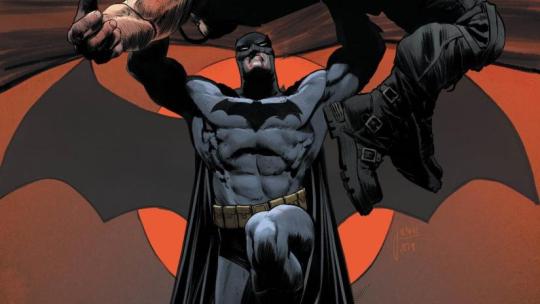
Feature Jim Dandy
Dec 18, 2019
DC Entertainment
Tom King
Batman
from Books https://ift.tt/34z0t1B
1 note
·
View note
Text
More Superhero Comics, Revealing My Reactionary and Facile Engagement with Art as Little More Than the Accrual of Social Capital, Benefiting Nobody But Myself, 4/7/19
The League of Extraordinary Gentlemen Vol. 4: The Tempest #5 (of 6), Alan Moore, Kevin O’Neill, Ben Dimagmaliw, Todd Klein: This is an often very funny issue, set up like a pasted-together UK edition of old US pre-Code horror and crime comics, which, in addition to being funny, plumps up the page count as the plot moves maybe two or three tics forward in advance of the very-last-issue-of-LoEG-ever. The conservative in me wonders why we’re being this digressive in the penultimate number of the entire saga, but then -- at least since “The Black Dossier” -- this project has been more about positioning various strands of fiction and their accrued cultural baggage against one another than telling a propulsive adventure story. Anyway: the realm of Faerie, having easily survived an attempted nuclear strike on the collective imagination by a military-corporate black ops fiction squad comprised entirely of various revamps of James Bond, has brought in every character from every game, comic, cartoon, TV show, movie and book reality with everything for a HUGE apocalypse!
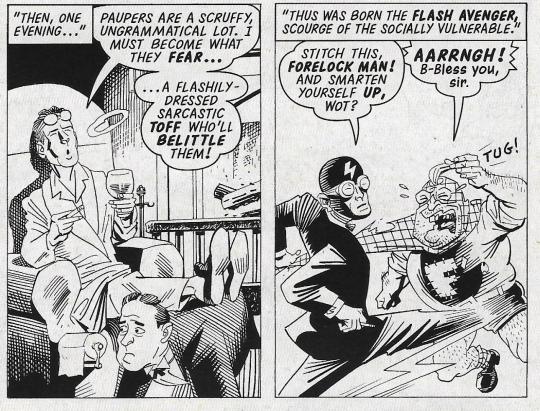
Scenes of bedlam involve: the life story of Victorian painter and murderer Richard Dadd; cameos by Stardust the Super Wizard and David Britton’s Lord Horror; the oeuvre of musician Warren Zevon, brought to terrifying life; a Corbenesque image of a nude muscleman’s massive dick flapping into battle in 3-D; Mick Anglo’s Captain Universe, presented by Moore in unmistakable evocation of his own Marvelman/Miracleman stories of decades ago; a ghost wearing the word CRIME on his head a la Charles Biro’s Mr. Crime, the greatest American comic book horror host; at least one figure from the annals of racist caricature firing powerful sound waves from his mouth; a monster named Demogorgon, the leviathan of Populism, which the heroes allegorically cross as a footbridge en route to a safehouse named the Character Ark; a page-long parody of Batman (via the forgotten UK superhero playboy character the Flash Avenger), describing his origin as motivated entirely by hatred of the poor; a text feature telling of UK comics artist Denis McLoughlin, who worked consistently since the end of WWII, never made enough money to retire, and spent decades as an elderly man drawing for survival on titles he hated, eventually taking his own life in his 80s; and the secret of what happened to all the British superhero characters after the midcentury, which is that they were all eaten by Capitalism, pretty much. I laughed a bunch, but if you think LoEG is tedious shit, this probably won’t turn you around.
*
Savage Dragon #242, Erik Larsen, Ferran Delgado, Nikos Koutsis, Mike Toris: The latest installment of the longest-running Image comic written and drawn by one of the Image founders, now deeply dove into problematic network tv drama stuff. The Dragon’s relationship with his partner Maxine is still strained in the wake of her sexual assault, a video of which the Dragon viewed in the police archives; meanwhile, the mother of one of the Dragon’s young children has been telling them all the truth about their parentage, further disrupting the peace of the household. Also, a formerly aggressive sex robot has joined the gang, dressed as an anime maid. And, the Dragon reluctantly teams up with the mid-’00s-vintage sexy heroine character Ant (which Larsen purchased from creator Mario Gully a few years ago) to foil a scheme by elderly elites to project themselves into the bodies of mythic gods in order to provoke the Rapture. Most interesting to me, however, is a bonus segment in which Larsen presents newly-lettered pages of his preliminary solo work on “Spawn” #266 (Oct. 2016), which would later be filled out by contributions from Todd McFarlane, colorist FCO Plascenscia, and letterer Tom Orzechowski.

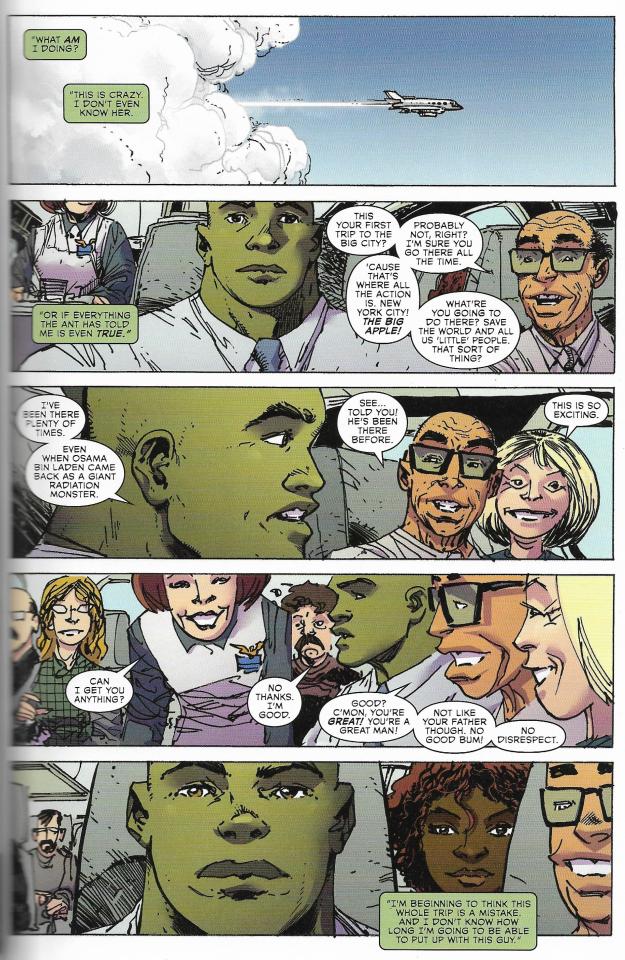
As usual, I prefer the ‘unfinished’ version (top) to the official release product (bottom).
*
Superman Giant #9, Erika Rothberg, ed.
&
Batman Giant #9, Robin Wildman, ed.
These are two of those 100-page DC superhero packages they sell for five bucks exclusively at Walmart (for now; later this year they’re gonna have them in comic book stores too), which marry one new 12-page story per issue with three full-length reprint comic books from elsewhere in the 21st century. I just wanted to know what was inside them. Here is what I found:
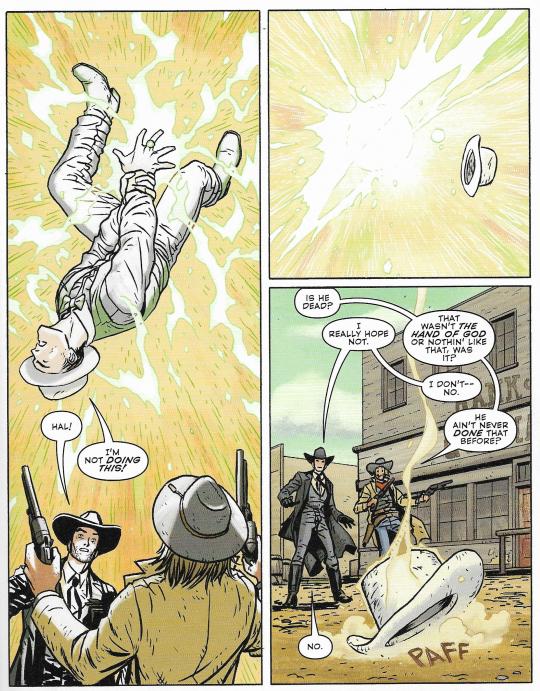
-The new Batman comic is written by Brian Michael Bendis as a very conspicuously all-ages prospect, where the story is about nothing more than what it’s about, and the title character is presented as a serious-minded but inquisitive and compassionate man of adventure. This issue -- just in time for the remix of “Old Town Road” featuring Billy Ray Cyrus -- Batman and Green Lantern travel back to the Old West, trade in their superhero outfits for cowboy clothes, and meet up with Jonah Hex. Nick Derington draws the heroes smooth and squinting with Swanian sincerity, and Dave Stewart colors it all bright and sunny. This is not my thing at all, but it’s confident to the point of acting like almost a rebuke to the rest of the book, where literally everything else is chapter whatever of a nighttime doom ballad drawn by either Jim Lee or something trying very hard to look like him.
-Like:
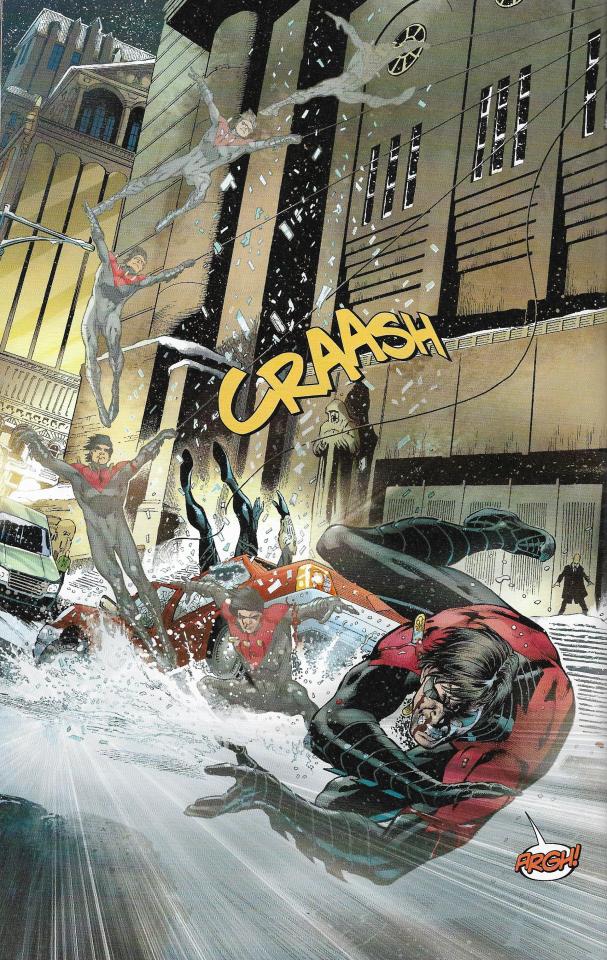

I can spot the differences, sure - if nothing else, reading superhero comics trains you to spot differences in otherwise similar things. But, there is absolutely an aesthetic at work. The top page is from an issue of “Nightwing” that tied into the 2012 “Night of the Owls” crossover in the Batman titles, produced by a seven-person drawing and coloring team fronted by pencillers Eddy Barrows & Andres Guinaldo. The writer, Kyle Higgins, has Dick Grayson fight his semi-immortal great-grandfather, who is an assassin for the Court of Owls: one of the more popular recent Batman organizations of villainy, presented here as a fascist group mediating society’s function through murder from the gray space between social classes. The Graysons, therefore, are the Gray Sons, but Nightwing resists the pull of destiny by winning a big fight, slinging the villain over his shoulder, and walking away toward a better future of just beating the shit out of bad people instead of killing them, I think. The Batgirl story -- from 2011, written by Gail Simone -- is comparatively orthodox, finding the character gripped with uncertainty about the superhero life and going about some downtime character-building activities, though most of it’s a big fight with a villain with a tragic past. The penciller, Ardian Syaf, kind of has trouble blocking the action so that characters’ movements are clear; I think Syaf is best known for having his contract with Marvel terminated in 2017 for slipping what were widely interpreted as anti-Christian and antisemitic references to Indonesian politics into an X-Men comic.
-There is a whole lot of Jeph Loeb among the reprints. He is not a writer who has been in critical fashion for much the past two decades, but he has undoubtedly sold a lot of comics for DC, and they probably feel he can do it again. The Batman book is serializing (deep breath) “Hush”, a 2002-03 storyline notable for its extraordinarily easy-to-solve central mystery, and generally being a taped-together excuse for Jim Lee to draw as many popular Batman characters as possible across 12 issues; it sold like hot cakes. The highlight of chapter 9 is probably a bit where a three person fight ends in one panel, and then one of the characters leaves, and then a second character wakes up from unconsciousness and also leaves, and then the first character comes back and nurses the third (also unconscious) character back to health, and then Batman arrives, all in the transition between the aforementioned panel and the next, which takes place in the same room; such is the befuddling desire to race ahead to more spectacle. Jim Lee (with Scott Williams and Alex Sinclair) is indeed Jim Lee (et al.) throughout, though at one point the team drops a howler of a swordfighting panel where Batman’s blade appears to grows to JRPG length due to what I think is the colorist filling two whoosh lines with the same hue as the swords.

Meanwhile, the Superman book is serializing a 2004 storyline from “Superman/Batman” -- the series where Loeb has Superman describe the action on the page with his own Superman-branded captions, and Batman does the same with Bat-captions, and Superman says tomayto and Batman says tomahto -- in which the late Michael Turner, one of the rock star 2nd generation Image artists, illustrates a new introduction for Supergirl. But this isn’t quite the same comic that was originally published... can YOU spot the difference?
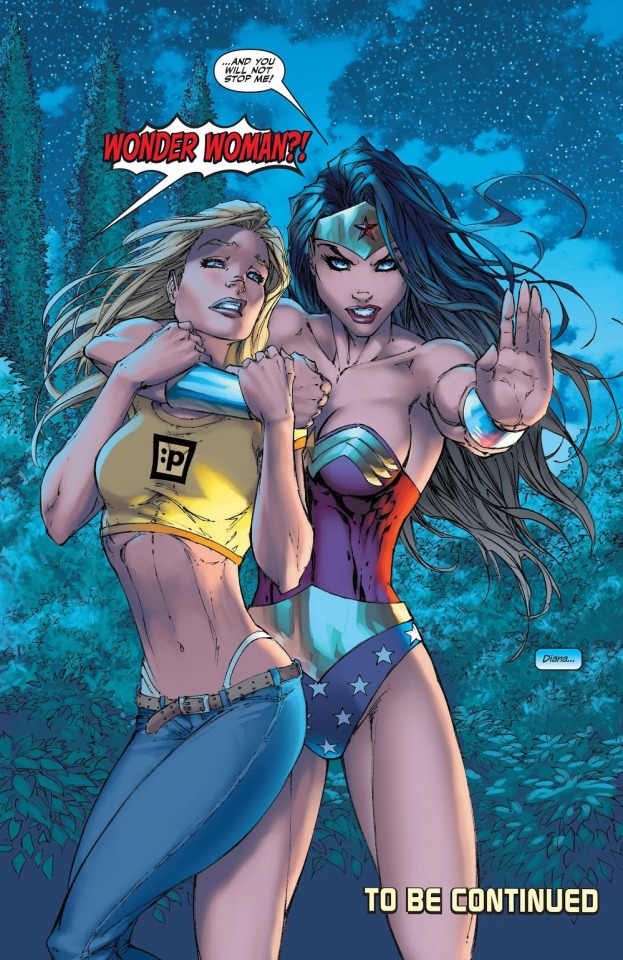
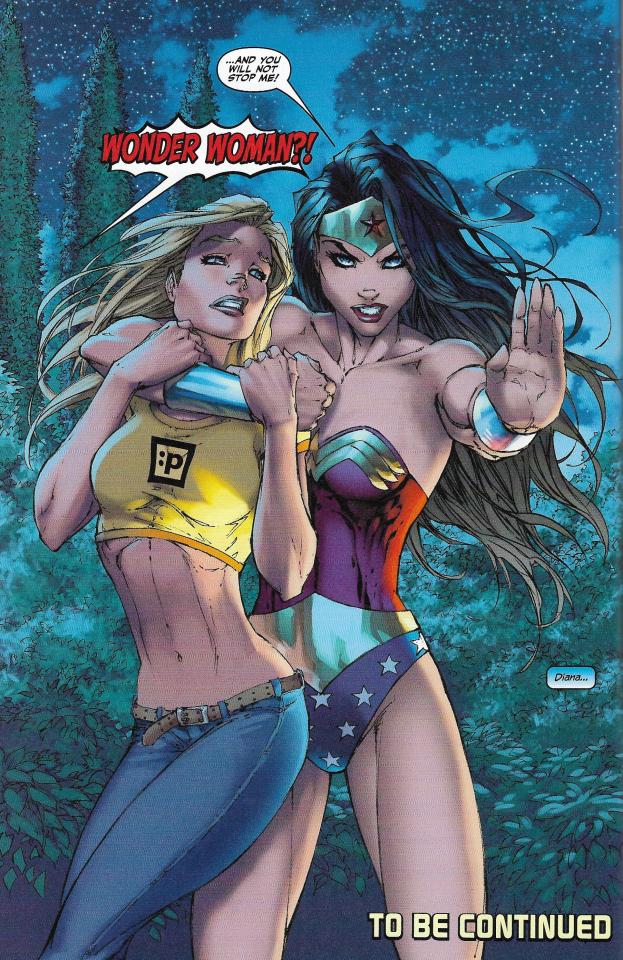
Is this like how Walmart won’t sell CDs that have an explicit content sticker, but with teen superhero g-strings? It’s hard to explain to younger readers how the low-rise/thong panties combo forever sealed the horniness of a generation of het male superhero artists into the late 1990s, and maybe DC doesn’t want to face that. Or, they’re just leery of how Turner slipping some peekaboo glimpse of Supergirl’s underpants or bare thighs into virtually every panel in which she is depicted below the waist might affect the marketability of the comic in 2019 - although I guess it could have happened in an earlier reprint somewhere too.
-The new Superman comic is a series of 12 splash pages depicting a race between Superman and the Flash. There is very little sense of speed, because Andy Kubert (inked by Sandra Hope, colored by Brad Anderson) draws the characters as frozen in time in a way that prioritizes muscular tension in the manner of contemporary superhero cover art; at one point the two characters part the sea with the force of their bodies, and it looks to me like they’re gesticulating in front of a theatrical backdrop. And, anyway, the story pulls back almost every other page to depict Batman standing on a ledge, or Lex Luthor in a sinister chair -- or some birds flying next to a building, or the Earth as viewed from space with streaks on it -- as the race occurs deep in the background or off to one side. The point is not excitement, but reflection, as imposed upon us by the between 13 and 21 narrative captions and/or dialogue balloons pasted atop all but the first page.
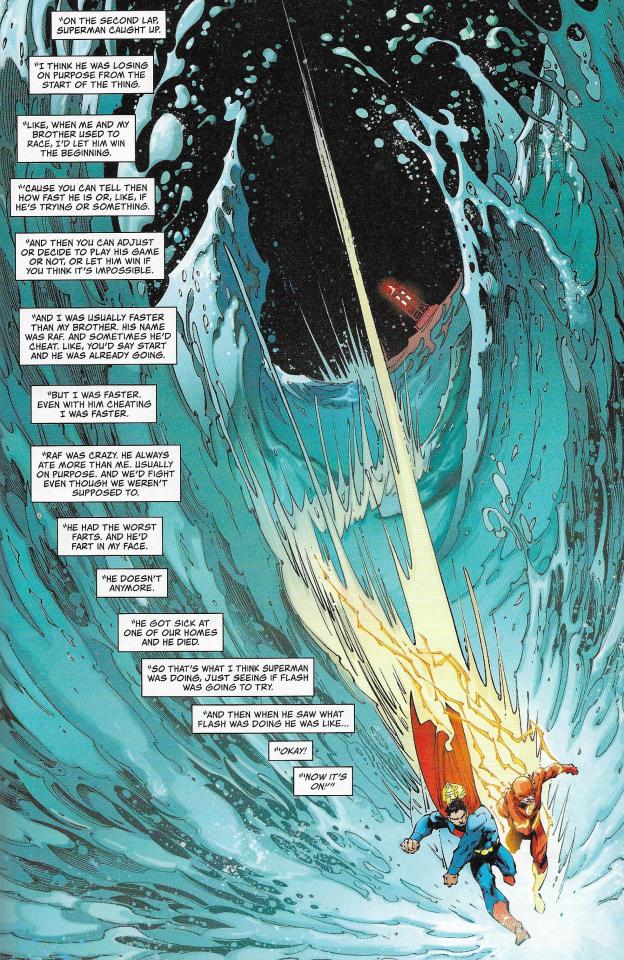
The writer is Tom King, whose “Mister Miracle” (with artist Mitch Gerads) gets a double-page advertisement later in the book, festooned with breathless blurbs from major media outlets. His narrator here is a little girl who is literally chained in captivity, clutching a Superman doll, and delivering her soliloquy in a manner of a superhero-themed TED talk with handclap repetitions on the nature of contradiction. Being faster than a speeding bullet is a CONTRADICTION. Being as strong as a locomotive is a CONTRADICTION. Leaping tall buildings in a single bound is a CONTRADICTION. Superman is about to lose the race, but then he wins, because to beat the Fastest Man Alive is... a contradiction. No wonder the GQ entertainment desk was blown away. DC comics do this kind of thing a lot, where they just have the writer tell you how great the characters are, and since you’re still reading superhero comics in the 21st century, you’re expected to pump your fists in recognition, because you and the writer and everyone at DC are just big ol’ fans... but I am not, because I am Jesus Christ, the only son of God.
-Elsewhere in the Superman book is an issue of “Green Lantern” from 2006, drawn by Ethan Van Sciver (inked with Prentis Rollins, colored by Moose Baumann), who is known today mostly as a conservative ‘personality’ online. He also netted more than half a million dollars last July in a crowdfunding campaign to make a 48-page comic book which he has not yet finished; funny to see an American right-winger on the French schedule. Funnier still to see the kind of people (mostly guys of a certain age) who mill around such personalities croaking about how diversity is ruining comics, because ALMOST EVERY FUCKING STORY IN BOTH OF THESE 100-PAGE BOOKS IS DRAWN BY EITHER SOME DUDE FROM THE 1990s OR SOMEBODY WORKING EXPLICITLY IN THAT STYLE, but - I guess when you’ve been pampered for so long, every paper cut feels like a ripped limb. Speaking of dismemberment, the writer here is Geoff Johns, who is often pegged as a superhero traditionalist, though he also has a grasp of gory pomp which occasionally pushes the comics he writes into a Venn diagram set with loud youth manga... at least in terms of how the action plays out, all broad and pained. So, needless to say, he’s currently writing “Doomsday Clock”, which is DC’s present attempt to extend the publication life of the valuable “Watchmen” property, so that they needn’t return it to the original creators, per the original writer, Alan Moore.
-To hear Alan Moore say it, the America’s Best Comics line was done on a work-for-hire basis as a means of ensuring prompt payment of the various creators from Jim Lee’s WildStorm, the original publisher. WildStorm was then acquired by DC (Jim Lee is now their co-publisher and chief creative officer), and Moore -- who has been (fairly) criticized in the past for taking ethical stances that cause financial harm to his artistic collaborators, who are in a less economically flexible position than writers in the comic book field -- allowed the line to continue under DC’s ownership, as to cancel everything would disadvantage everyone working on the titles. One of those titles, “Tom Strong”, was written by Moore and pencilled by Chris Sprouse for a while, and then there was a long line of guest creators, and then Moore and Sprouse came back when the ABC line wrapped, so that the concept could reach its logical termination point in an apocalyptic manner... Moore does love an apocalypse. The final story in the Superman book is a very recent, late 2018 issue of “The Terrifics”, in which we find an attempt to revive the DC-owned Tom Strong characters as players in broader DC stories. Jeff Lemire & José Luís are the primary creators. Jack Cole’s Plastic Man is there, as well as the John Ostrander/Tom Mandrake version of Mister Terrific. It’s a lot of offbeat characters; we even see Moore’s own parody of Hoppy the Marvel Bunny, because, I mean, Alan Moore does a lot of riffs on preexisting characters too, right? It’s a big blob of cartoon whimsy, filled with available characters running around. If they’re available, you might as well roll ‘em out, off the new releases rack and into a supermarket reprint package stacked in a box next to squeeze toys and discount Pokémon merchandise, which I bought, because it was really cheap.
-Jog
17 notes
·
View notes
Text
A Rambling Chronicle of Marvel’s Western Comics
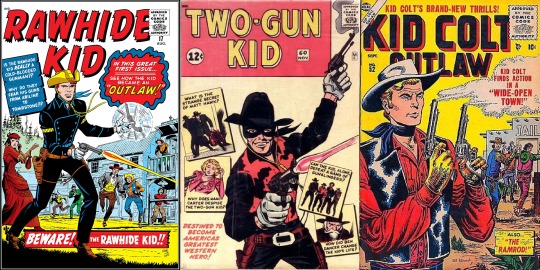
By Vincent Faust - November 27, 2018
Marvel Comics is the most prolific comic book publisher of the Western genre. Despite their near ubiquity in today’s culture with billion dollar box office receipts, even their diehard fans may not know this part of their past.
I may be missing a few scattered things, but by my count Marvel has published 1,192 issues of Western comics through their history. Marvel had published Western stories from their very beginnings with the Masked Raider in 1939′s Marvel (Mystery) Comics 1-12. Though the genre didn't explode until the late 1940s following the war, while superheroes were declining. Timely (Marvel’s name at the time) launched 7 western titles in 1948.
The "Big Three" of Marvel westerns are Kid Colt Outlaw, Rawhide Kid, and Two-Gun Kid. Each lasting an impressive 229, 151, and 136 issues respectively.
The star artist of Kid Colt was Jack Keller. Who drew most of the character's stories from 1953-1967. An impressive run. Some have argued he has the honor of drawing the most individual stories for one specific Marvel character. Many of these books had 3-5 short stories per issue, so I wouldn't argue against that. If we only count full issue stories, I'm not sure who would take that title. Probably Mark Bagley for Spider-Man, combining his lengthy 1990s run on Amazing and his history making 2000s run with Bendis on Ultimate.

In 1960, right before the Fantastic Four, Stan Lee and Jack Kirby reinvented Rawhide Kid. After a publishing hiatus the title was brought back with issue 17. The character was now Jonathan Clay and his costume changed. Over two and a half years, their run was revered as the cream of the crop in a waning genre as their own superheroes began to explode.

As Kirby was needed more and more on the superhero titles selling like hotcakes, a tiny run by Jack Davis followed. Davis was an EC Comics legend who took a pit stop at Marvel before becoming even more of a legend at Mad Magazine. Unfortunately, practically the only classic Marvel Westerns to be reprinted in collections is this span of Rawhide Kid. With issues 17-35 reprinted across two hardcover Marvel Masterworks.

Here is Stan Lee talking to Jack Davis and fellow EC/Mad/minor Marvel contributor Harvey Kurtzman. For Marvel, the legendary Kurtzman did 150 episodes of a one-page filler strip titled Hey Look! from 1946 to 1949.
youtube
Especially as Marvel was finally able to publish more titles, Stan Lee's efforts were being stretched too thin as well. So, Rawhide Kid was handed over to his younger brother Larry Lieber to write and draw. Which he did for almost a decade, to minor acclaim from genre fans. Sounds very reminiscent of the hidden gem Gary Friedrich/Dick Ayers/John Severin run on Sgt. Fury and His Howling Commandos.
"I don't remember why I wanted to do it, particularly. I think I wanted a little more freedom. I didn't do enough of the superheroes to know whether I'd like them. What I didn't prefer was the style that was developing. It didn't appeal to me. Maybe there was just too much humor in it, or too much something. I remember, at the time, I wanted to make everything serious. I didn't want to give a light tone to it. When I did Rawhide Kid, I wanted people to cry as if they were watching High Noon or something." - Larry Lieber
Lee and Kirby also reinvented Two-Gun Kid for the early 60s, but didn't stick around as long on that one.
Other artists who made a mark on Marvel's western titles include Fred Kida, a notable Golden Age Japanese-American artist known primarily for Airboy. Also Russ Heath, who passed away only recently, and the frequent collaborators John Severin and Dick Ayers. Most of these artists were also prolific in the war genre. The genre is also to thank for the introduction of Herb Trimpe, who would go on to become the definitive Hulk artist.
The true star of the show though was one Joe Maneely. Who Stan considered his best artist before Jack Kirby returned in 1958. The Philadelphia native was skilled and fast, pumping out tons of westerns as well as the Black Knight and Yellow Claw titles, which retroactively tie his work to Marvel continuity. Unlike Kirby, Keller, and Lieber he was not particularly linked to one western title, but his most consistent would be Ringo Kid.
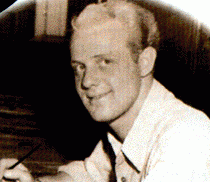
Meanwhile, outside of the genre one of Stan Lee's other top artists was Matt Baker. Considered to be the first African American professional in the field. Also there are reliable reports from friends and family that Baker may have been a gay man. He was one of the primary innovators of the "good girl" art style on Fox Feature Syndicate’s Phantom Lady and countless romance titles. Another milestone was drawing arguably the first graphic novel - It Rhymes with Lust.
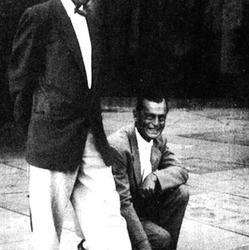
Due to some business factors in and out of publisher Martin Goodman’s control, Marvel (at this point known as Atlas Comics) nearly imploded in 1957. The bullpen was completely disbanded, leaving Stan Lee in an empty office. They went from regularly publishing almost 70 titles to only 16. Many of which were filled with inventory stories and reprints as long as Stan could manage not paying freelancers. This situation was further complicated by their new distributor having way too close of a relationship with market share leader National (now DC Comics).
Joe Maneely stepped in front of a train in 1958 at only the age of 32. It may have been a suicide. Matt Baker died of a heart attack in 1959 at 37. As stated above, Jack Kirby comes back to Marvel right around that time and Steve Ditko was quickly growing as an artist. It's tragic how close these two masters were to being on the ground floor of the Marvel Universe as we know it today. What heroes could Maneely and Baker have drawn or created?
The 1970s sees lots of reprints of classic genre comics. An exception is the original title Gunhawks (though an unrelated The Gunhawk title predated it). Though only lasting seven issues, Gunhawks has an interesting distinction. Originally starring Kid Cassidy and Reno Jones, a good ol’ plantation boy and his buddy slave. Who fought willingly for the Confederacy because some Yankees kidnapped his girlfriend. That makes sense... In the sixth issue, Cassidy is shot and killed. The finale was technically retitled to Reno Jones, Gunhawk. Making that 1973 comic book only the second at Marvel to be named after a Black protagonist, following Luke Cage. Black Panther had ongoing adventures, but had taken over the anthology title Jungle Action and wouldn’t get his own series until later. DC lagged behind Marvel in this regard.
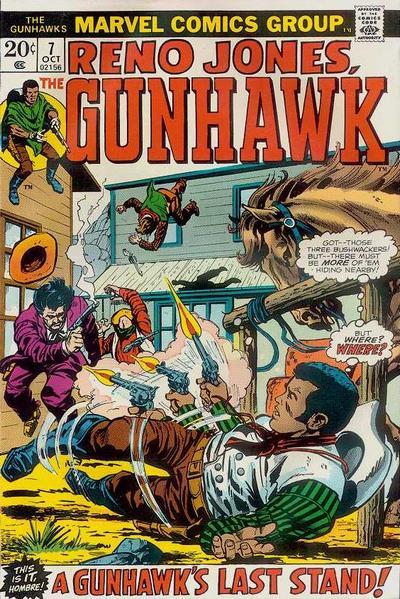
In 1979 the western genre at Marvel was basically declared dead, with Rawhide Kid and Kid Colt finally canceled. The latter after over 30 years of continuous publication. Two Gun Kid had been canceled two years earlier. Though for a few years already, almost all of Marvel's westerns (and war books) had been turned into reprint titles.
Of those aforementioned 1,192 issues, 1,146 of them are from 1979 or earlier. Leaving less than 50 across the last 40 years.
A 1980 tryout issue with a new character (and a Frank Miller cover) goes nowhere.

A 1985 miniseries by genre veterans Trimpe and Severin depicts the Rawhide Kid now as a middle aged man, as the West is in its final days. It is kind of depressing.

Backpedaling a bit. As the Marvel superheroes dominate, the western heroes occasionally make crazy guest appearances through the means of time travel. Most notably the Two-Gun Kid becomes an all-but-official member of the Avengers and a close friend of Hawkeye. He gets tied up with time travel generally for years to follow. Later becoming a She-Hulk supporting character and Avengers Initiative leader circa Civil War

With that cover, let's now take another aside to untangle Ghost Rider. Ghost Rider is not originally a Marvel property. The vigilante was created by Gardner Fox (Justice League of America) and Dick Ayers for Magazine Enterprises in 1949 as a horror themed western character. The feature spent time as a backup in Tim Holt and eventually broke out into its own short lived title.
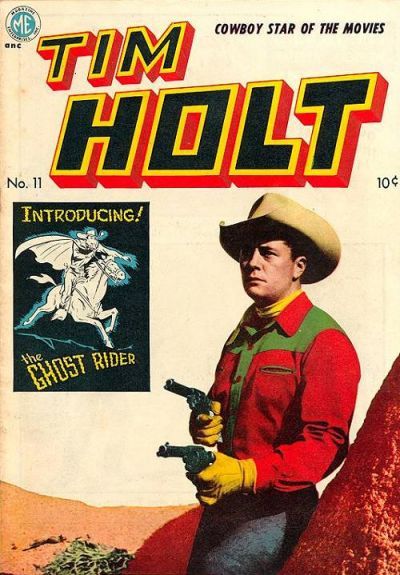
Magazine Enterprises went kapoof alongside the slump in the industry around the implementation of the Comics Code Authority in 1954. The regulation agency set up by industry leaders to avoid government intrusion following moral panic. The over-cautious guidelines severely neutered the crime and horror genres, while superheroes were already dormant, gutting many publishers. The Ghost Rider trademark expired. Marvel picked it up in 1967 for a series drawn by original creator Dick Ayers. Motivated in equal toxic parts by Martin Goodman's obsession with securing trademarks (practically every character Stan Lee created can be traced to an earlier one) and then rising writer Roy Thomas's history nerd leanings.

Obviously the name would be repurposed for the more recognizable Johnny Blaze in 1972. Marvel retroactively renamed Carter Slade as the Phantom Rider. The modern demonic versions of Ghost Rider do rarely touch on western themes. Johnny spent some time as a nomad and Garth Ennis brought in some western connections to expand the GR lore.
The western genre is basically passed over through the whole 1990s.
In 2000, John Ostrander and Leonardo Manco come around for a miniseries integrating all the Marvel western heroes together. Followed by a 2002 sequel. With revelations and deaths. The kind of lore retconning series that tickles the fancy of comic history nerds like yours truly. Ostrander also did Justice League: Incarnations around this time, tracing through the history of the JLA.

2003 comes around and it all that heavy lifting revitalization goes in the toilet. Ron Zimmerman writes a Marvel Max Rawhide Kid series. Zimmerman is some kind of comedy writer and Howard Stern regular. Well, within comics he wrote this and the god awful Ultimate Adventures - the only wholly original Ultimate Universe book, a Batman and Robin parody that was part of the U-Decide bet with Marville and PAD's Captain Marvel.
Marvel Max was a new imprint established in the early 2000s to break away from the aforementioned Comics Code and tell more daring, mature stories. Occasionally this resulted in gold like Jessica Jones. However, most of the time it was cringe inducing dreck.
So what's so bad about Rawhide Kid Max? He's now gay. Umm...OK, as long as it's handled well, maybe? Nope, constant cringey sexual innuendos which border on the protagonist coming off as a sexual predator. Some idiot gave it a sequel years later too.

Since then, we've gotten a bunch of one-shots in 2006, a weird Andy Diggle miniseries in 2012, and then the surprisingly great Marvel 1872 from Gerry Duggan during the patchwork reality crossover event Secret Wars. Which set up the Red Wolf series which was doomed by bad optics surrounding the writer and Marvel's spaghetti on the wall strategy of the time.
One of those 2006 one-shots ended up being legend Marshall Rogers's final published work. He and longtime collaborator Steve Englehart did it while waiting for DC to greenlight Dark Detective III, the second spiritual sequel to their influential 1970s run on Batman.

Here’s hoping we get to see some of these legendary heroes on the trail once more. At the very least we will get another tiny snippet in 2019 with a Gunhawks one-shot being brought back in celebration of Marvel’s 80th anniversary. Written by crime comics duo David and Maria Lapham.
This concludes a rambling chronicle of Marvel's history with the western genre and considerable tangents touching more generally on the history of Marvel and the comic book industry.
4 notes
·
View notes
Text
Series of dumb comedy 'Speakers Ward': Viewers blush because of obscenity, illness
kissa sins porn A-group announced "Comic human progress" ...
In mid 2017, the generation group of Orion certainly propelled a drama arrangement called Ward Loa. As per them, Loa Ward is an exceptionally recognizable, comfortable with the general population of Vietnam. It is the connection between the town culture and present day life. The gathering chose to name their comic drama arrangement Loa Ward since it needs to bring the group of onlookers a fun and basic story.

The intended interest group for this comic drama arrangement isn't just the youthful yet in addition the scholarly world on the grounds that the substance of the scene does not go interestingly or utilize the hot factor to see the view in any capacity.
On the facebook page with about 800,000 supporters, the generation group guarantees, their item is a "funny acculturated and close".
For over a year, they have created in excess of 80 scenes. Every scene keeps going in excess of twelve minutes, appeared on youtube at a specific time. The scene pulled in a huge gathering of people. There are scenes, the quantity of perspectives up to millions.
Arrangement 'Loa phuong' arrangement: The view by the writer, the picture 1
The scenes of the drama arrangement "Loa Ward" dependably make watchers redden.
... The watcher reddens with foulness
In spite of the fact that this is a clever comic drama arrangement, maybe the entertainers did not comprehend the significance of the word human advancement, or intentionally misjudged the word.
From the name of the scenes enough to make normal individuals feel become flushed, What is: Metamorphosis, The gong, When the spouse is powerless, Finding the young lady, The assault marvel, Do How to fulfill your better half with just 200k?
Not exclusively does the name emit the inclination, in the prologue to the base of the scenes, creation group likewise offers solicitations. Like in the scene How to fulfill sweetheart with just 200k? , è-creation group expressed: "200k where to go sweetheart to fulfill the siblings, you all jump at the chance to must be sentimental new muscle.
In this parody arrangement, words that in regular daily existence, few individuals set out to utilize, are the characters in the film talks guiltlessly, agreeable.
In this drama arrangement, words that in regular day to day existence, few individuals set out to utilize, are the characters in the film talks honestly, agreeable. Words, for example, "glass", "clean vegetable", "young lady" ... indeed, even swear words likewise show up in the recurrence of thick. Huge numbers of their activities make watchers feel embarrassed and furious.
For instance, in scene 12 of this comic drama arrangement called Mirage Rage. The scene rotates around a couples romantic tale, betting. They called the young fellow to lease a house to get some information about his fantasy the previous evening in view of the "fantasy of a fantasy".
This young fellow was asked honestly replied: "The previous evening assault my significant other uncle." The lady chuckled at her eyes. The master isn't furious yet additionally asks the fantasy painstakingly. The young fellow addressed carefully. By affiliation, the couple found the proprietor's number to hit.
Hit huge, he made supper, welcomed the young fellow to drink liquor, remunerate cash and announced: "If you don't mind for the benefit of the entire family thank you assault uncle." Before restoring, the young fellow got the message: "Next assault and afterward let me know."
Or on the other hand have the scene, the dad intentionally manhandle the spouse at home, on account of his child "huge however not insightful" discover his better half. Or on the other hand a young lady hopping on the person with the welcome: "Today I treat him a decent dish, this dish is made by my mom, I'm you, I cherish you should give me that glass."
Arrangement 2 'Loa phuong': The view by the author, 2
What do watchers say?
The principal scene of the satire arrangement is just about cleverness. After every scene of the parody arrangement, the gathering of people left a ton of remarks. Other than a few assessments, there are numerous individuals who are likewise keen on scenes.
Be that as it may, as time advances, creation groups are increasingly presented to indecent, foul substance, names, circumstances in scenes or discussions, dresses of characters. Indeed, even with the crowd remarking, a lady's underpants set appeared.
Joined by the decrease in content, the gathering of people additionally spent a considerable measure of contrary criticism for this satire arrangement. The quantity of transparently exposed watchers has expanded with expanding detest. All the more detestably, the remarks underneath are likewise winding up progressively horrendous, difficult to acknowledge. The individuals who watch the film concentrate just on the characters dressing in or sprucing up the body of the performer.
5 notes
·
View notes
Photo


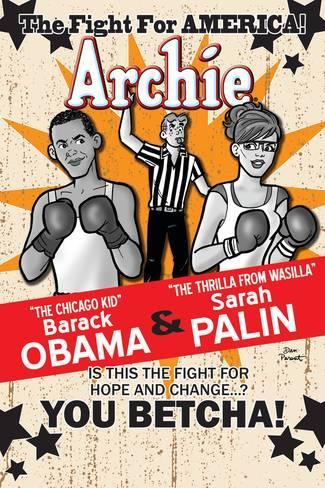
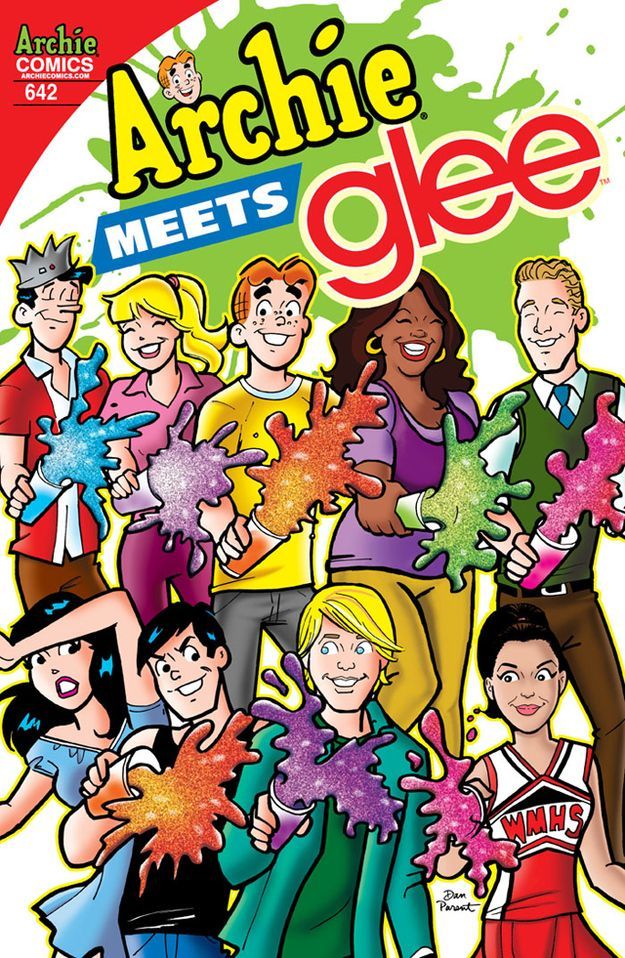
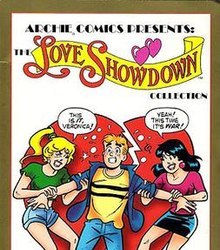

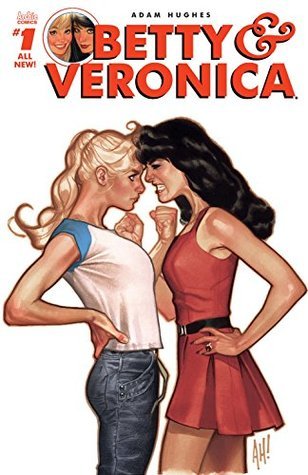

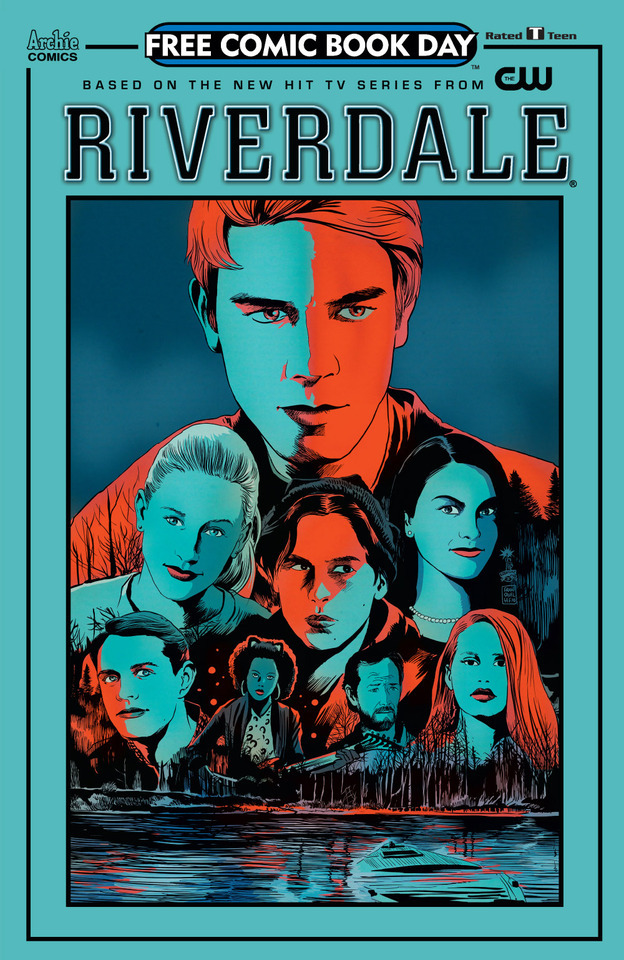
MONDO FunnyBooks: Bunker Down.
Were you a recent visitor to the wonderful world of comics fandom and discussions between professionals in the business, you might have the idea that comic customers were essentially a superstitious and cowardly lot.
Current sources of outrage, retweets and outbreaks of delusional authority run riot have been ranged from the fairly embarrassing to the downright worrying. Arguments in this writers memory have been about: 'Is The Joker doing something not very nice to a human being?', 'How dare a movie studio choose to cast who they like in the film they're paying to make without consulting US first?', 'This man who draws and has been drawing people in a particular fashion has drawn this person in his particular fashion. How dare he?' We reached peak David Icke/Alex Jones levels of hilarious Othering this week when an X-Men artist referred to SJWs as 'Nazis'.
Irony and Satire have apparently given up on humanity and gone for a pint.
The usual conservative, tribal viewpoints of people who've confused an artistic medium with a constant stream of politically free distraction designed only to anatheize rather than engage and stimulate thought, then. It's more important to harass Ruby Rose for being cast as 'Batwoman' until she feels compelled to leave Twitter or be upset at the news of Michael B. Jordan playing Johnny Storm for reasons that were absoultly nothing to do with racism but rather the...uh...misportrayal of the modern American family which defintly traditionally couldn't contain a black man. Also something something tradition or something.
When we've brought this up before, we're usually countered with something like 'Oh, you should see Harry Potter/Overwatch/Hunger Games/Fortnite fandoms, they're JUST as bad.' Which we are willing to assume is true, having seen YouTube comments, but it does seem that the entertainment industry has a bad habit of emulating the worst excesses of the comics industry.
Whether it's Empire or TV Guide running variant covers, Toy producers doing convention exclusive figures and then selling them at a premium afterwards or even, HighFather Keep Us From Laughing, the application of the words 'Limited' or 'Collectiable' to a product to imply both a scarity that requires instant purchase and a possibilty of high resale value when in fact those are words that could be applied to any physical product ever.
We can almost guarantee that there are only a limited amount of copies of 'Night Rocker' by David Hasslehoff in the world and should you decide to purchase one or more copies, you have collected them, but neither fact is hard evidence that anyone will offer you more than you paid for them ten years in the future.
This is a rather..odd state of affairs to have come about. With the exception of poetry or graffiti, Before the medium was hijacked into becoming one more vehicle to sell corporate superhero products, work like George Herriman's 'Krazy Kat' explored the nature of language via abusive animals against the unrelenting tedium of the desert. Little Nemo In Slumberland by Windsor McCay was a continous attempt to map the subconscious in a strip adaptable to any format thrown at him by publishers. Sigel and Shuster commericalised the Jewish notion of a charismatic Golem who would maintain balance against an American society that had been taught to hate them. Fly By Night publishing types would use the form to glamourise the world of true crime and vaguely condemning tales of drug abuse to create an entire sub-culture by showing a willingness to adapt to the times.
These were the early days of comics and sequential story-telling and by now there ought to be work making these masterpieces look like the plinkings of Woody Gutherie against the all out assault on the cortex that is an Atari Teenage Riot. Instead the front end of the medium seems more concerned with dotting the I's and lining the t's of it's previous output (our favourite example being Marvel's 'Secret Wars Too: A comic that explained to readers why the comic it was parodying would be late. They charged money for this, as well.)
Comics were long considered the Outlaw Artform, so capable of shaping the public psyche that the content and distribution were brought up in Congress to see if it was necessarily to regulate the avalibilty of them to children. It's a longer story than will run here but the essence of the events is that while the 1954 hearings saw Congress conclude that comics were NOT a harmful product that would negatively influence children's minds, the comics industry decided that it would be best to settle public hysteria by establishing 'The Comics Code Authority', which would impose a series of standards and regulations upon comics seeking to be distributed on the newsstands.
Ironically, one of the people on the earlier incarnations of the board that would make up The CCA would be John Goldwater, one of many who takes credit for the creation of Archie Andrews'.. This writer likes to think Mr Goldwater was probably a little resentful of EC Comics's Archie parody 'STARCHIE!' (MAD Magazine Issue 12. Remains funny but now also looks like any episode of 'Riverdale'.) and was more than happy to choose the phrasing of a code that also happened to regulate the key words in EC Comic's top selling comics out of publication. All the resentful little men in comics complaining about being mocked are 'Happy Days''s Howard Cunningham wearing his Grand Poobah hat in our head.
We say 'ironically', because the current Ickeian theory is that comic sales in the direct market are so low due to Marvel and DC 'giving in' to the demands of the 'SJWs'. What with their unreasonable demands for more realistic representation in mainstream comics, we can see how 'Could you produce more comics we'd be willing to buy?' would definetly be an agenda designed to bring down the entire comics industry.
Because we are given to facts, we can't dispute a lot of the problems the new comics industry faces. Sales on New Comics to The Direct Market ARE down.
It would take the same sort of mind that blames Barack Obama for his Presidential inaction during Hurricane Katrina to think that the problems of new comics are the work of those damned SJWs, though. Not unless Heidi MacDonald has a time machine.
Unless Laurie Penny staged a hostile takeover of The Marvel Editorial Summit and said 'Right. Here's what we want: Please keep raising the prices of your comics by roughly about a dollar every few years, do more $150 crossovers that will have no significance in about 4 years or so. Please spin off as many comics as possible from one of your prime brands. Make sure your top staff behave like Obnoxious King Nerds on social media whenever possible.Instead of focusing your sales team on promoting the comic as a good read, keep pitching your comics as must buy investment issues aimed at speculators who won't be back for the next issue. As soon as your readership have begun to settle into a book, it's direction and it's creative team, that's probably the best time to relaunch your titles.
Be sure to confuse readers and retailers by pretending each relaunch is a 'Season' without ever referring to which season is currently published in advertising or trade dress. Come up with any justification whatsover to publish an anniversary issue that's triple the price of a regular comic as frequently as possible. Try to devalue the contribution and sales cache of your creative team over the amount of variant covers offered to retailers. Have your top writers actively and vocally hostile to the notion of second printings and finally publish no comics that even vaguely resemble the TV and Movie versions of your characters so new readers can come into a shop after seeing "Avengers Assemble" and be offered 7 books called "Avengers" but they'll mainly be about some men chatting at a table.'....then the reasons why new comics are failing aren't at the hands of SJWs.
They're at the hands of the publishers. The above list is the main reason for the decline in sales of new comics in specialist shops that we saw in our days behind the till. All things we were saying over a decade ago at retailer meetings with Marvel and DC. We were brushed off in order to try and wave shiny new 3D variants back then.
A few years later, when it was apparent that the law of diminishing returns was in full effect, was when finally The Big Two turned to the 'gimmick' of appealling to a wider audience. When oddly, that half-hearted effort to win over a new readership by publishing the books in the same venues as usual didn't work,with little support from their publicity and advertising departments both Marvel and DC quickly threw these efforts under the bus as proof that trying to expand your salesbase beyond a Wednesday crowd was a waste of time.
Except that''s nonsense of course. Any analysis of pre-order charts will tell you that the sales have been in heavy decline since 2007's 'Civil War' from Marvel. The constant attempts to repeat that success in that format are the problem. Marvel and DC trying the 'Social Justice' route and it's subsequent failure is a shameless attempt to rewrite history for the benefit of an agenda of tired Poobahs scared of time and their limited views of the comic medium making them irrelevant.
In fact, Marvel's recent attempt to appeal to Muslims,AND teenagers (imagine.) at once was quite late in the game with 2013's 'Ms Marvel' while the 'Feminazi Bible' Mockingbird wouldn't begin threatening Poobah Egos until around late 2016. Meanwhile, Archie Comics had smelled which way the wind was blowing several years earlier....
Archie Comics were always smarter than the ongoing superhero titles because they never set themselves up to tell an ongoing story, but rather worked like an extended cartoon strip. If you read three random issues of any Archie comics, you were probably as clued up on the cast of Riverdale as you were going to need to be to understand the dynamics of what was going on. Archie was perptually out of sync with the world around him, Betty was goal driven and meant well, Moose wasn't quite sure what day it was but loved Midge more than anything, etc. etc. All you had to do was set up a situation, add two or more of the characters and let the rest play out.
Even better, since the characters weren't obliged to be a certain age given the backstory (Peter Parker can't be worrying about teenage problems since he's been around long enough to get married, be a lecturer, etc.) the backgrounds and fashions could simply be updated to reflect the times of publication.
So no awkward retcons such as Reed Richards and Ben Grimm starting off as veterans of World War 2 and suddenly having gone through The Gulf War instead, prompting questions like 'Which comics have and haven't happened, then, because The Avengers definitely went to Saigon in the 70's but the existence of The FF precedes The Original Avengers finding Captain America in the block of ice and Cap turned out to be fighting Richard Nixon during The Secret Empire Saga so...argh!'
Archie managed to stay on the newsstands long after the self absorbed and inside baseball nature of superhero comics rendered them unsaleable in your average W.H.Smith's or Wal-Mart, since any issue of Betty & Veronica could be read by anyone with no need to check out previous issues. It was very rare that any one tale would run more than one comic and the few times it did, it was with fantastic results. We'll get to that.
In 2010, Marvel was wasting everyone's time and money on 'Siege; or 'What If Asgard wasn't in space but in Oklahoma instead?' while DC insisted on spreading the myth that people who grew up in Liverpool talk like they're from Shoreditch by adding John Constantine to the line up of 'Brightest Day'.
During the same year, Archie dragged mainstream comics kicking and screaming into the future with 'Kevin Keller', a comic featuring an openly gay male lead out in the real world and everything. This annoyed some American Mary Whitehouse wannabes called 'One Million Moms!'. They campaigned against the title being sold in children friendly areas such as Toys R Us but only really proved their basic inability to count to 1 million.
In the same year they published covers featuring Archie kissing Valerie, the black bassist from Josie & The Pussycats. If this doesn't strike you as a big deal for a comic being published in the mid-west of America, well, you might be one of those guys suggesting that there's always been adequate representation in comics.
They didn't sell as many comics in specialist shops, but while The Big Two continued to tread water, Archie kept moving forward, kept looking to crossover with big name brands, parodied the biggest comic crossovers, featured the likes of Barack Obama and Sarah Palin, paid homage to EC Comics and got Adam Hughes to draw covers. They even explored exactly what WOULD happen if Archie finally chose Betty. And Veronica. And heartbreakingly, how deep Archie's love for his fellow man ran in the conclusion to the marriage stories in 'The Death Of Archie.' Oh, and he also met the Predator.
Then they stepped everything into higher gear with our second favourite horror comic of the 21st Century with Afterlife With Archie. It was a book we'd recommend to new readers as a good alternative to the horrendously overpriced, badly drawn horror or just too boring to be scary books glutting the market with 'Torture Porn Variants'. AWA would feature at least one chilling moment per issue likely to stay with you long after you finished reading. One issue of tie-in book 'Sabrina The Teenage Witch; is worth 3 or 4 'Walking Dead' trade paperbacks in terms of actual horror instead of people talking around a trailer park.
If you had been a fan of the Archie world before and hadn't read it for a while, though, our glee would be magnified. While the horror/jump scare bits of AWA are genuinely well done and actually quite intense, the bits between undead assault are where the real horror lies as relationships between all the characters are twisted forever, new angles and revealations would stop you ever being able to see Midge, Cheryl, Reggie and more in quite the same light.
This moving with the times meant that the Archie readership were quite capable of seeing the characters they loved for so many decades in different modes of storytelling and art styles laid the groundwork for two things: The relaunch of the line in 2015 with high profile creators such as Mark Waid, Fiona Staples, Chip Zdarsky and Adam Hughes doing new and interesting takes on a universe we all knew so well (A bit like The Ultimate Universe but with a point and a plan.) and also the hit show 'Riverdale'.
It will not surprise many of you to learn that the Grand Poobahs Of Comics (TM MONDO FunnyBooks 2018) hated 'Riverdale' and frequently grumbled 'Not MY Archie.' but then, by folding their arms and threatening to hold their breath until the artform of comics goes back to being what THEY want, they've proven time and again that they're constantly wanting to find a straw man to blame for the world moving on without them. These were the same people who moaned about 'Archie Vs Punisher' for not taking Frank Castle seriously enough and thought the parody crossover 'Love Showdown' (Which promised that Archie would finally choose a permanent girlfriend) would break the Archieverse once and for all.
There are lots of ways to improve the state of comics. Indulging the whinging of grumpy old men and refusing to believe the rest of the world might be interested in comics are not on that list of ways.
And as a wise man once said 'The people want BeBop. And who I am to tell them that BeBop is wrong?'
5 notes
·
View notes
Note
2, 5, 12, 20, 25
2) what work of yours, if any, are you the most embarrassed about existing?
Somewhere on the Internet, there are multiple incomplete Homestuck fanfics floating around under an old screen name of mine... but somehow those aren’t the most embarrassing of my creations. The most embarrassing would be the weird story-comic-disaster that I created when I had writer’s block in ninth grade. It was a self insert parody of self insert fanfiction AND my own novel AND my own past parodies of my novel... it was exactly as absurd as it sounds.
5) character you were most surprised to end up writing
Harmonine. Harmonine, or maybe Lady Brennadine. They both started as these very typical one-dimensional secondary characters, neither one was supposed to be complicated. Harmonine is the benevolent goddess of fate, Brennadine is That One YA Governess. You probably know exactly the archetype I’m talking about.
The reason they’re so surprising is because as I wrote them, they developed personalities and motivations that are totally off-the-wall considering what they were created to do. I mentioned Harmonine first because she’s the more egregious example. Benevolent goddess of fate, my ass. The only credit I can give is that she certainly thinks she is.
12) your weaknesses as an author
My old answer for this was always dialogue, but I’ve actually gotten a lot better at writing conversations in the last couple years. Nowadays, I think it’s transitions between sections, and keeping myself motivated. ADHD makes getting stuff done very difficult.
Also, I’m really bad at working outside my genre of choice. This is highlighted by the fiction workshop I’m in right now, which forbade genre fiction... I have no idea how to come up with a good story when I’m stripped of the ability to hide behind my worldbuilding and plot shenanigans. It’s not much of a problem when I’m able to write the kind of story I like to write--internal character change motivated by external plot, as opposed to the character development creating the plot--but when I need to leave my comfort zone it goes horribly. I’m working on it!
20) do you write in long sit-down sessions or in little spurts?
Long sessions, almost always. I’m really bad at getting into “the zone,” so when I manage to do it I stay working for as long as I possibly can. Hyperfocus is a double-edged sword and when it works in my favor it is a beautiful thing.
25) copy/paste a few sentences or a short paragraph that you’re particularly proud of
And after two thousand years, weremembered their names, going about our daily business in the rainbowreflections of their faces, despite everything else. That was a rare privilege.I wanted it, more than gold or jewels or any amount of power. I needed it.
This is an excerpt from chapter 3 of the Feilan rewrite, where Sayara’s looking at the stained glass windows in the Tsi royal library and thinking about her ~aspirations~! I really like the whole section, but it’s a solid page of material and way too long for something like this. TLDR; Sayara wants to be famous, and she’s a little more invested in legends about Calama and Cyrenna than anyone really needs to be.
#taz talks#i think my old ao3 username was jormungandrising?#but i've long since forgotten the password#AND what email i used to sign up for it#if anyone's curious about my god awful writing from tenth grade#iirc i stopped working on those fics because i wanted to focus on writing book 2....#the /first draft/ of book 2#aka the legendary one with the dragon chase scene and the mystical fairy adderall#dramaticvoiceover
2 notes
·
View notes